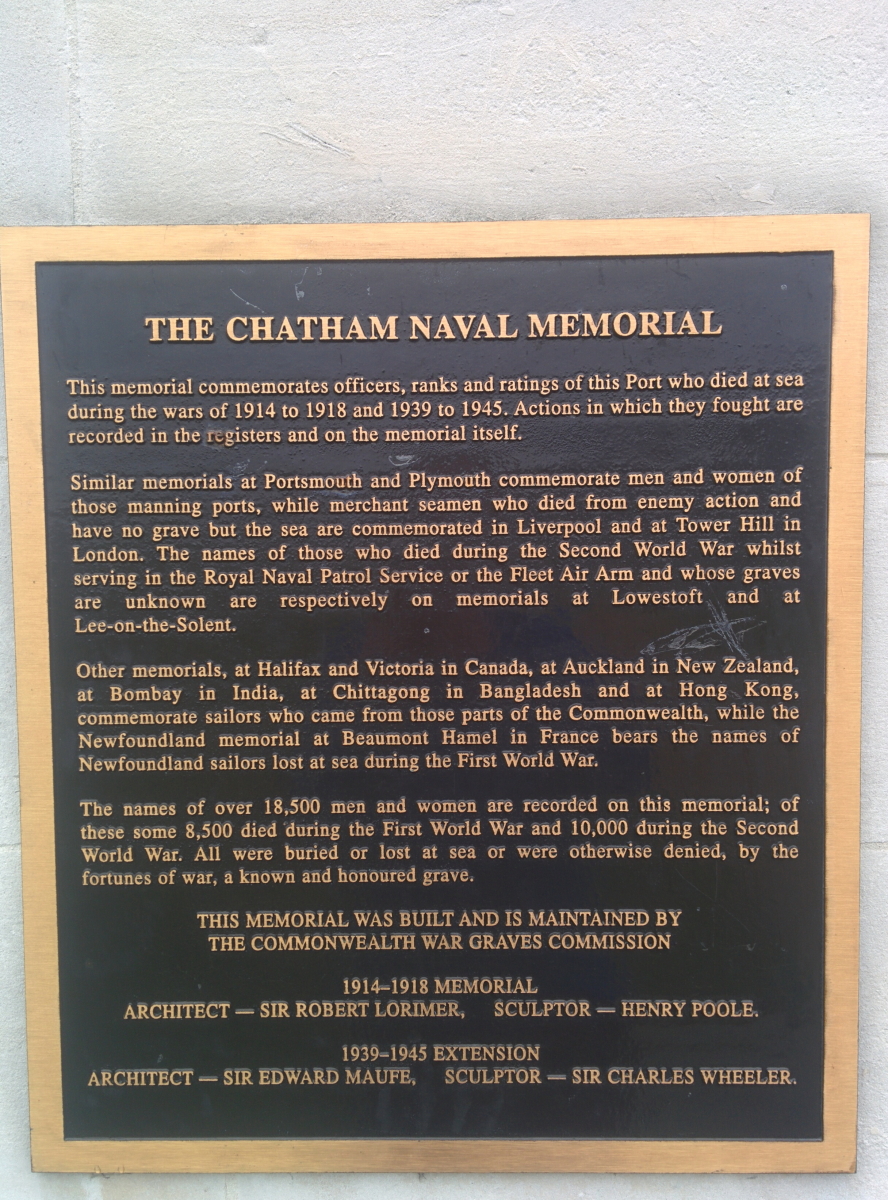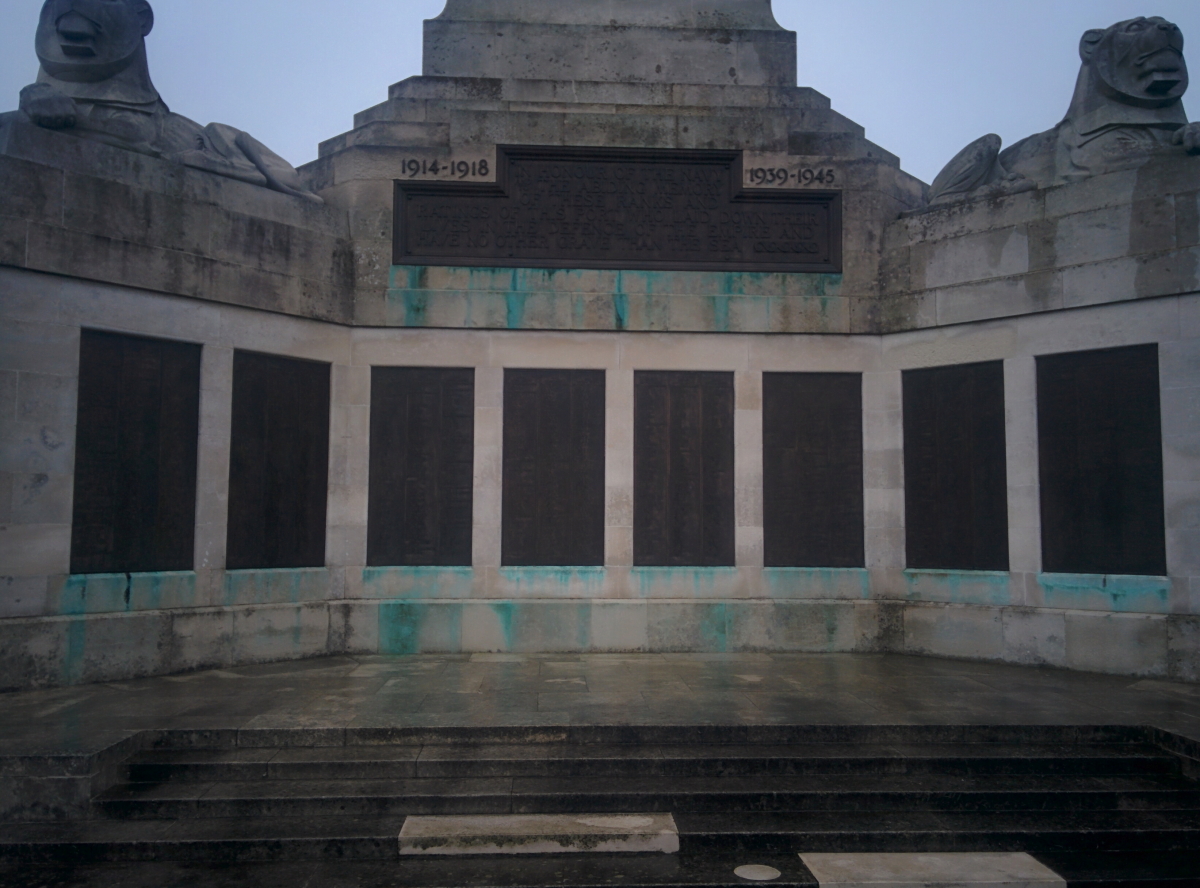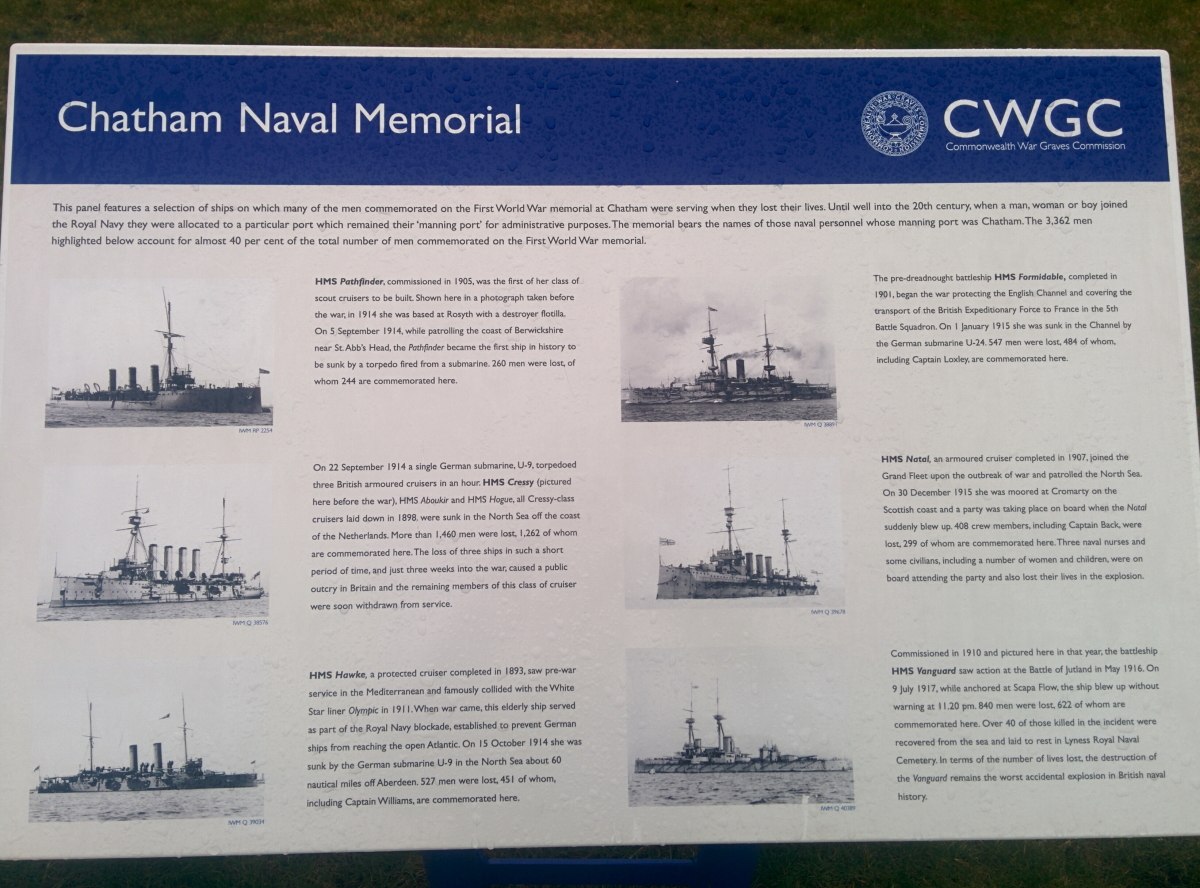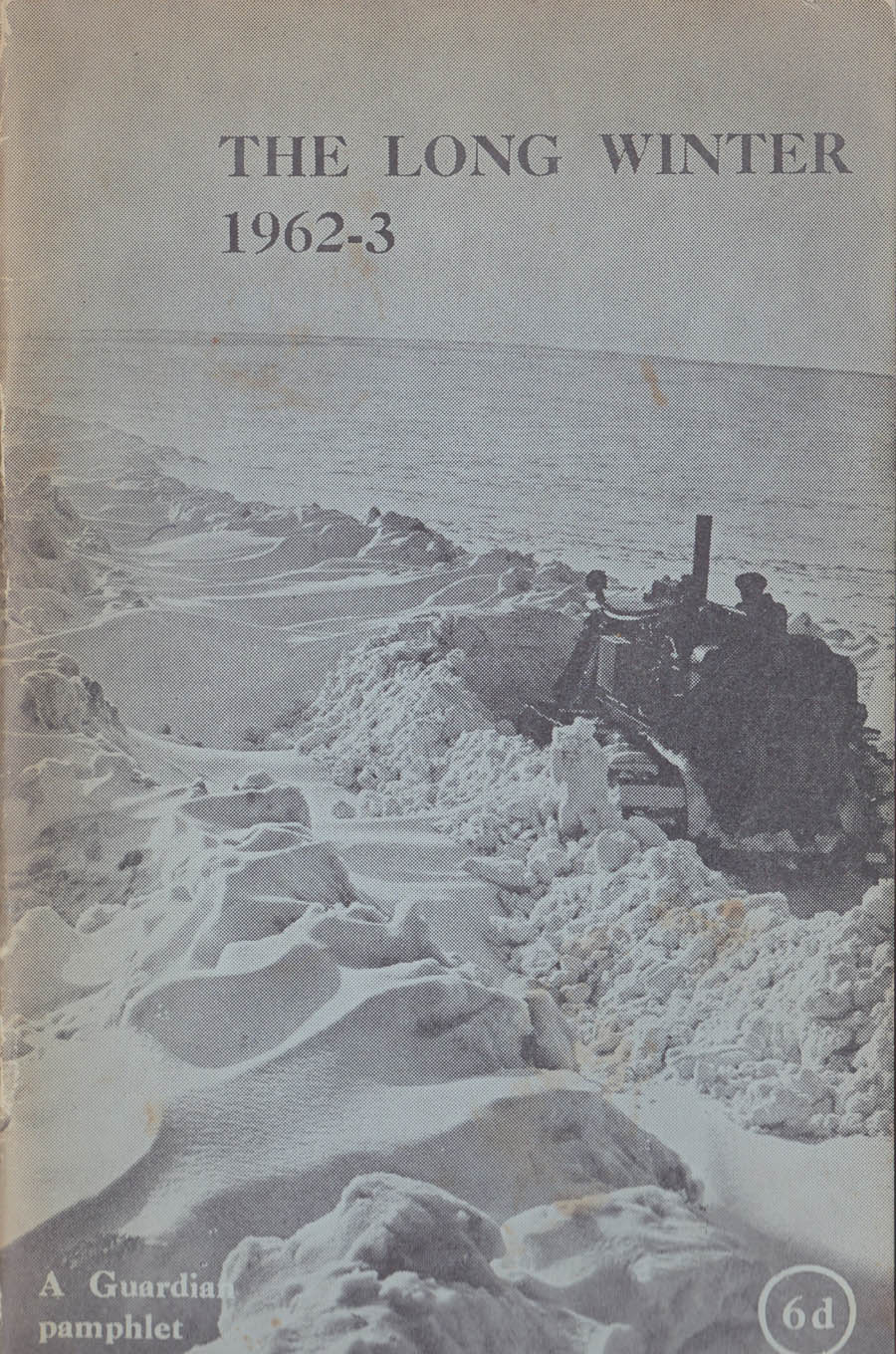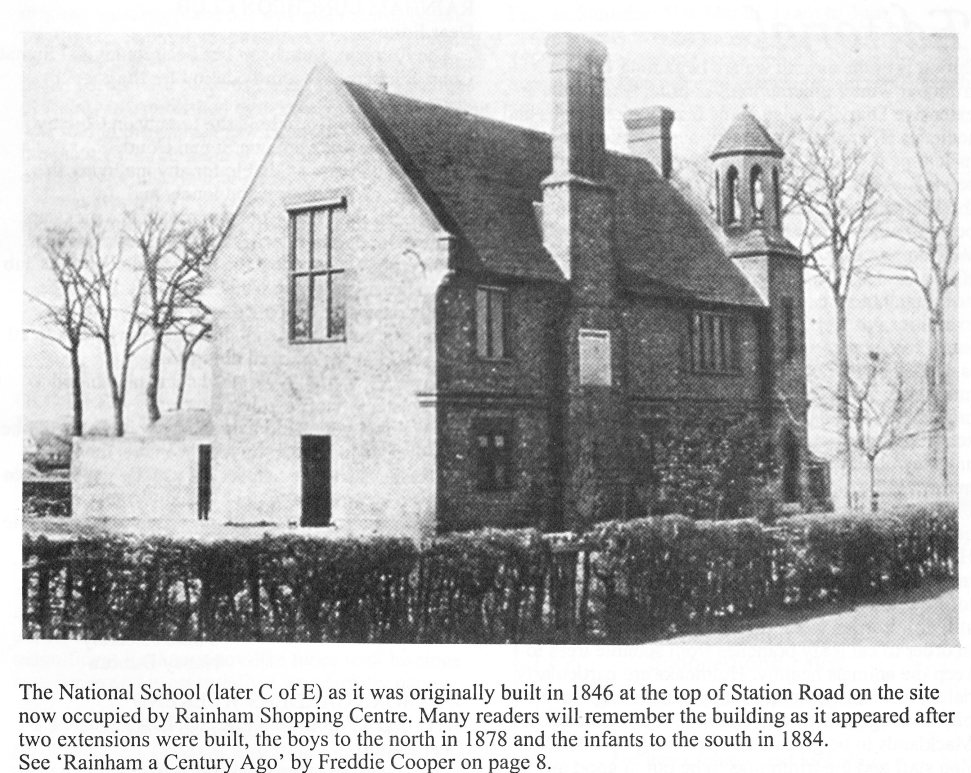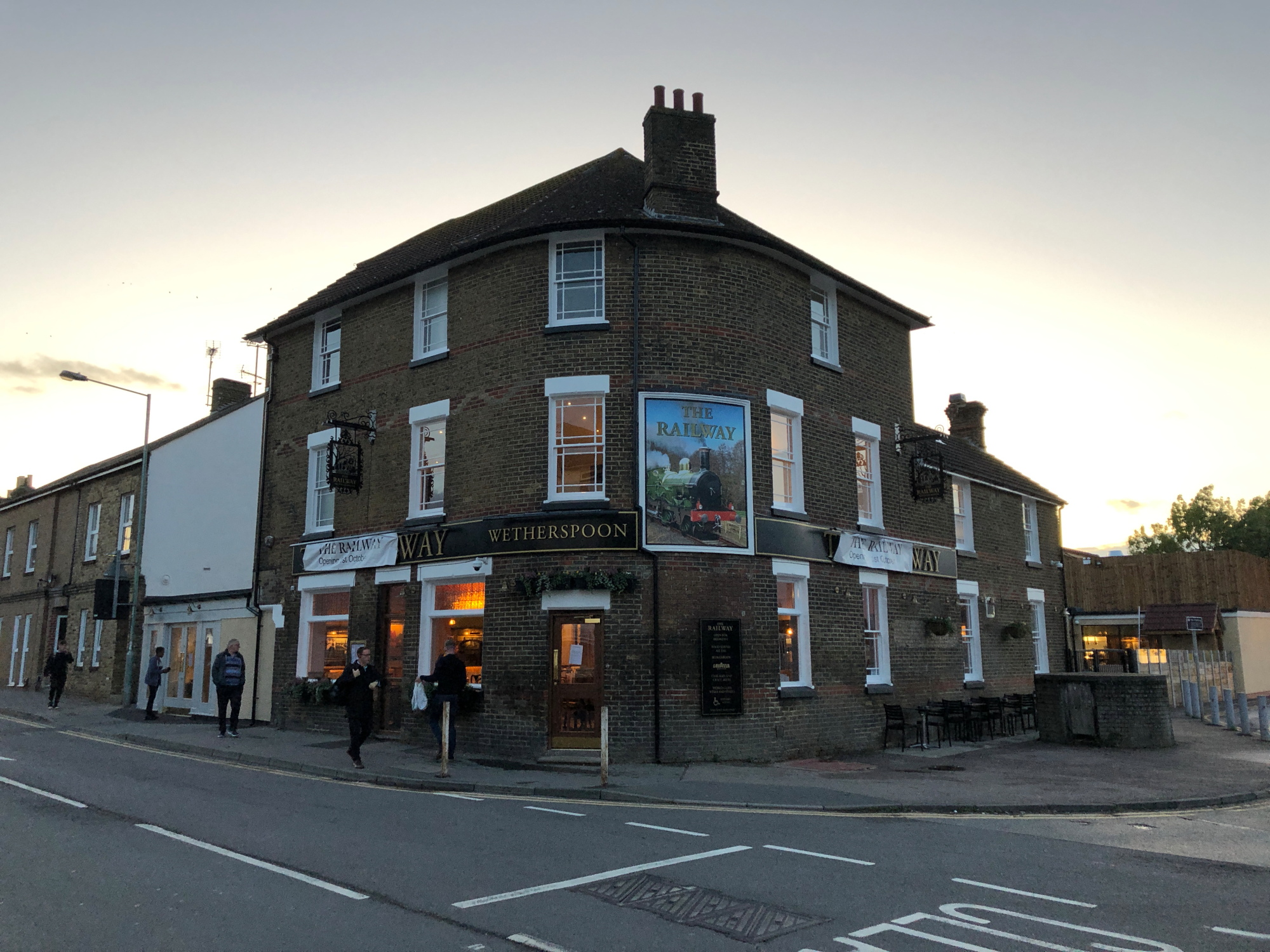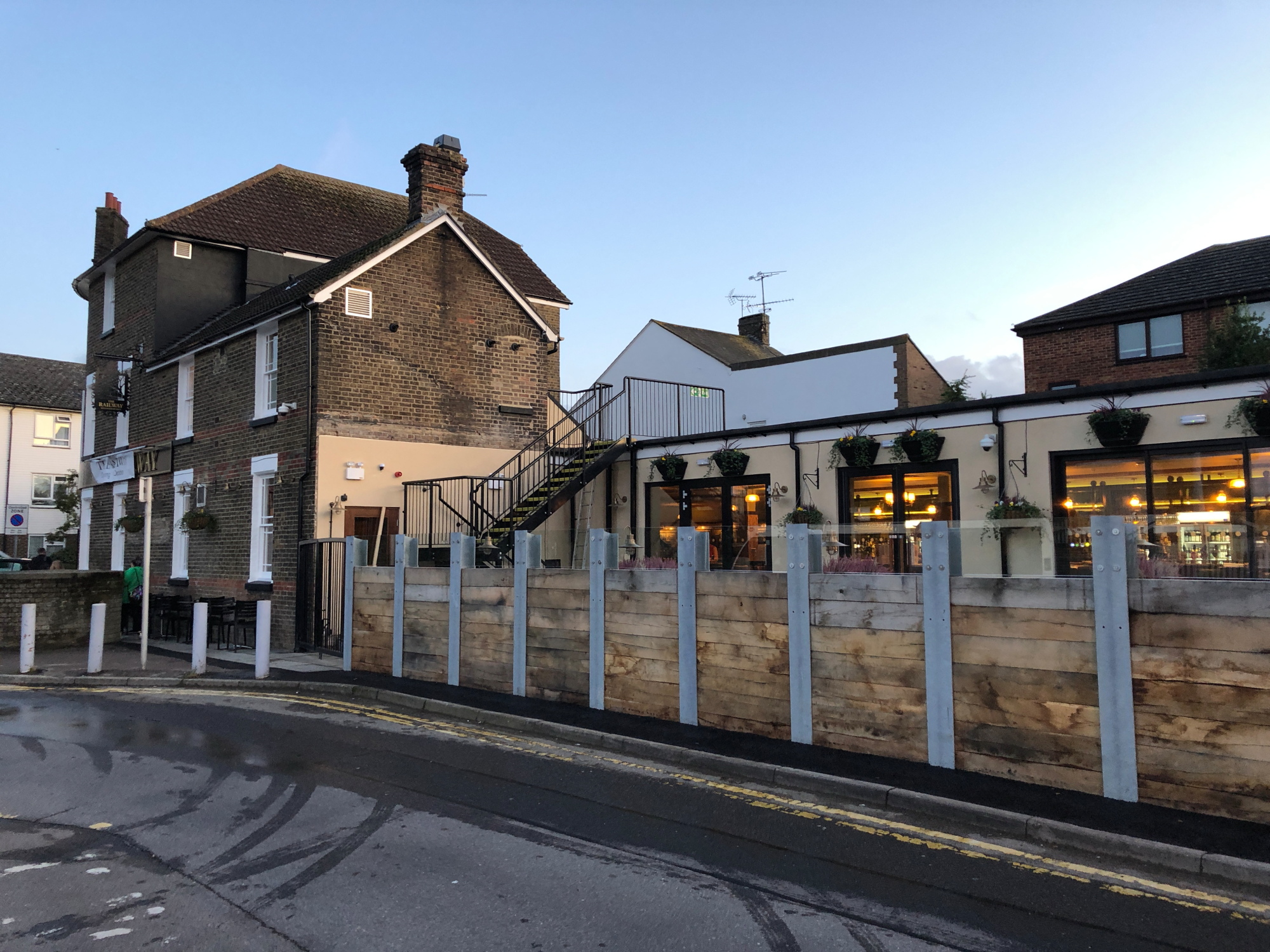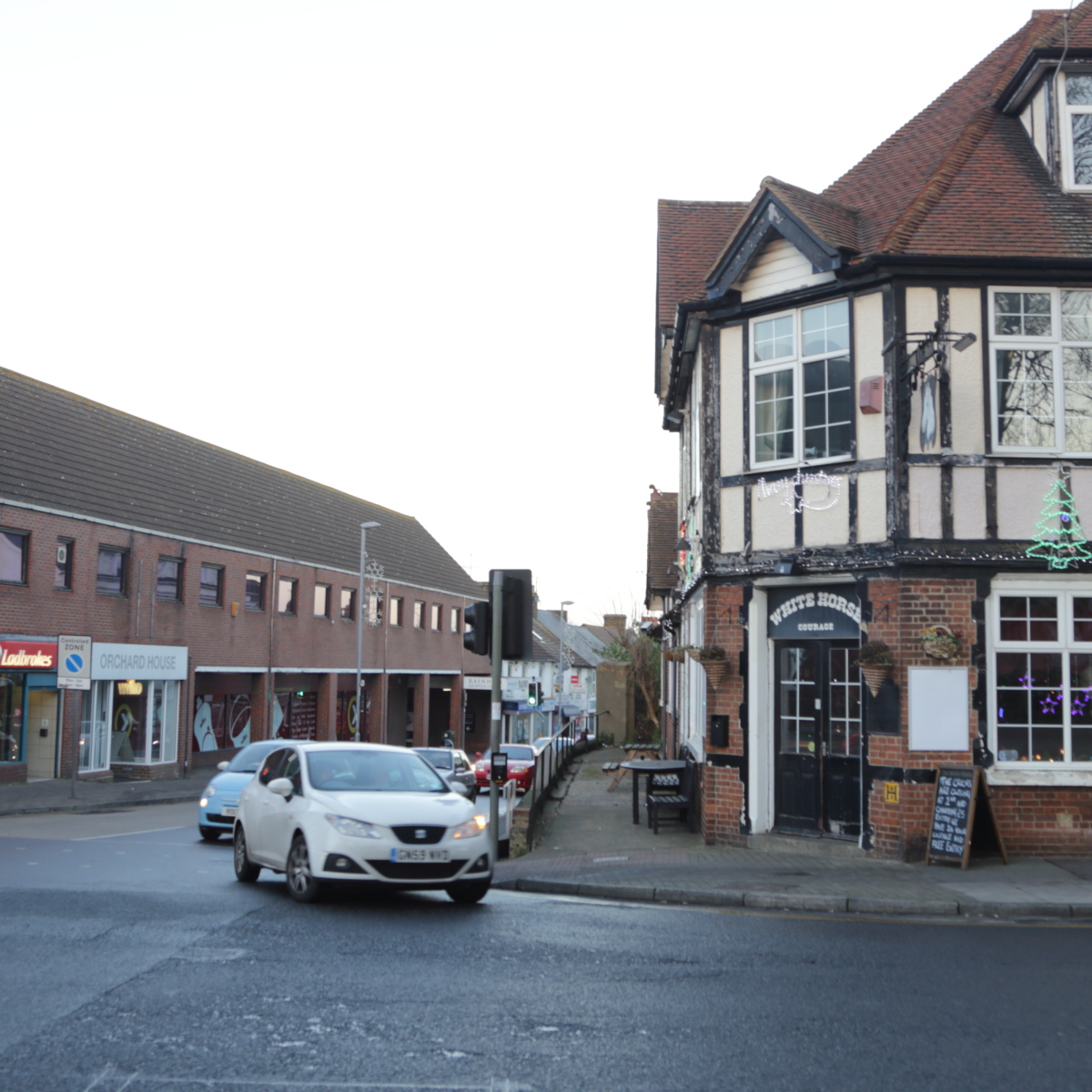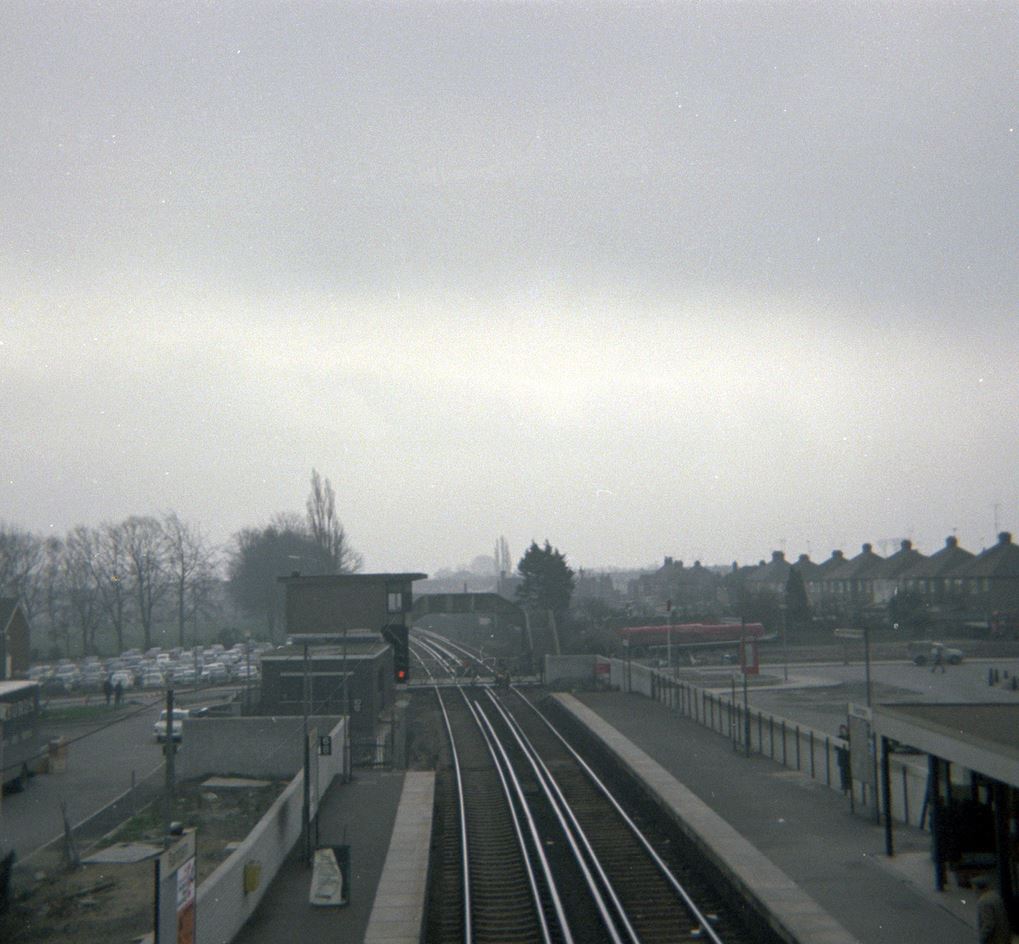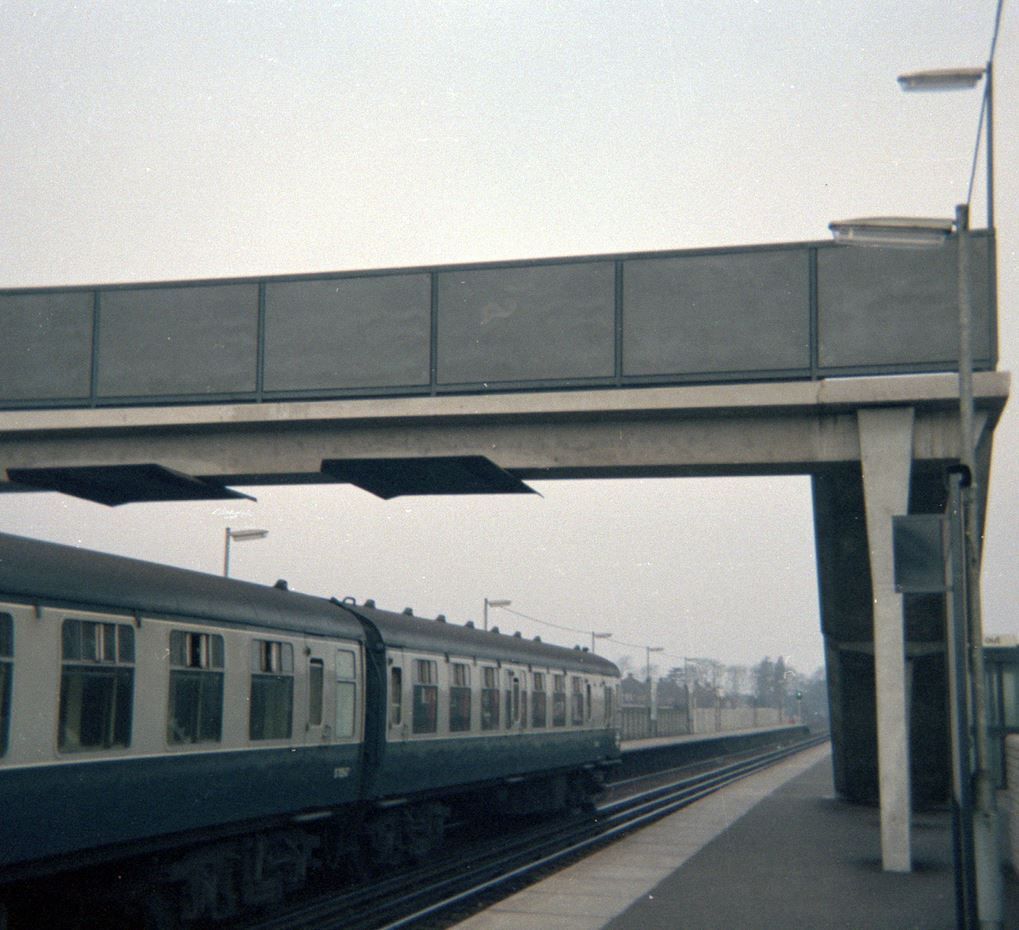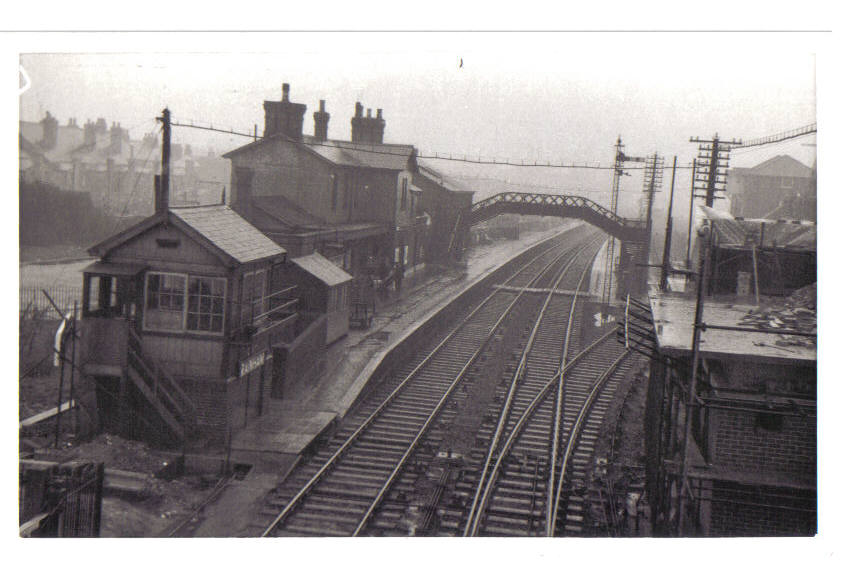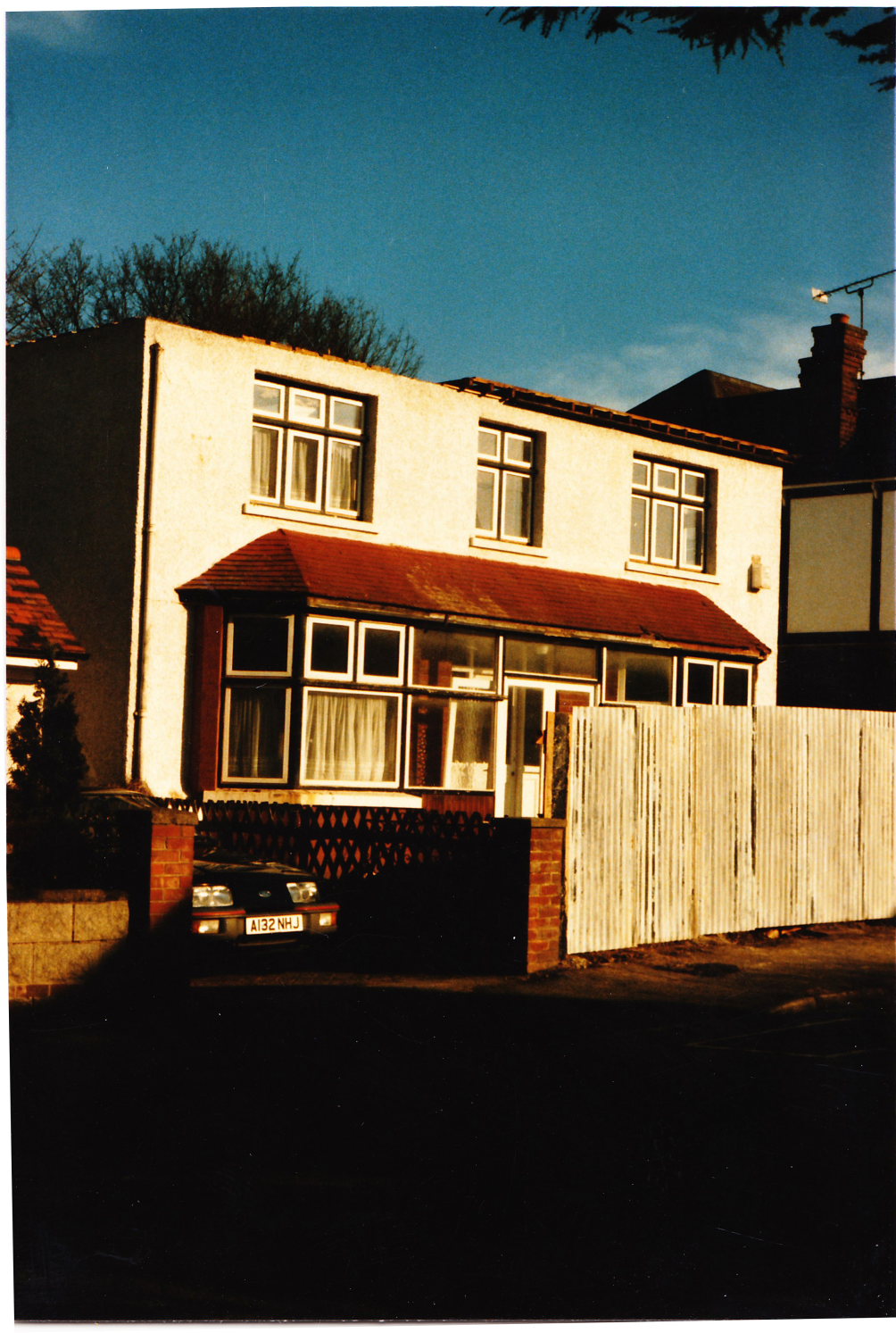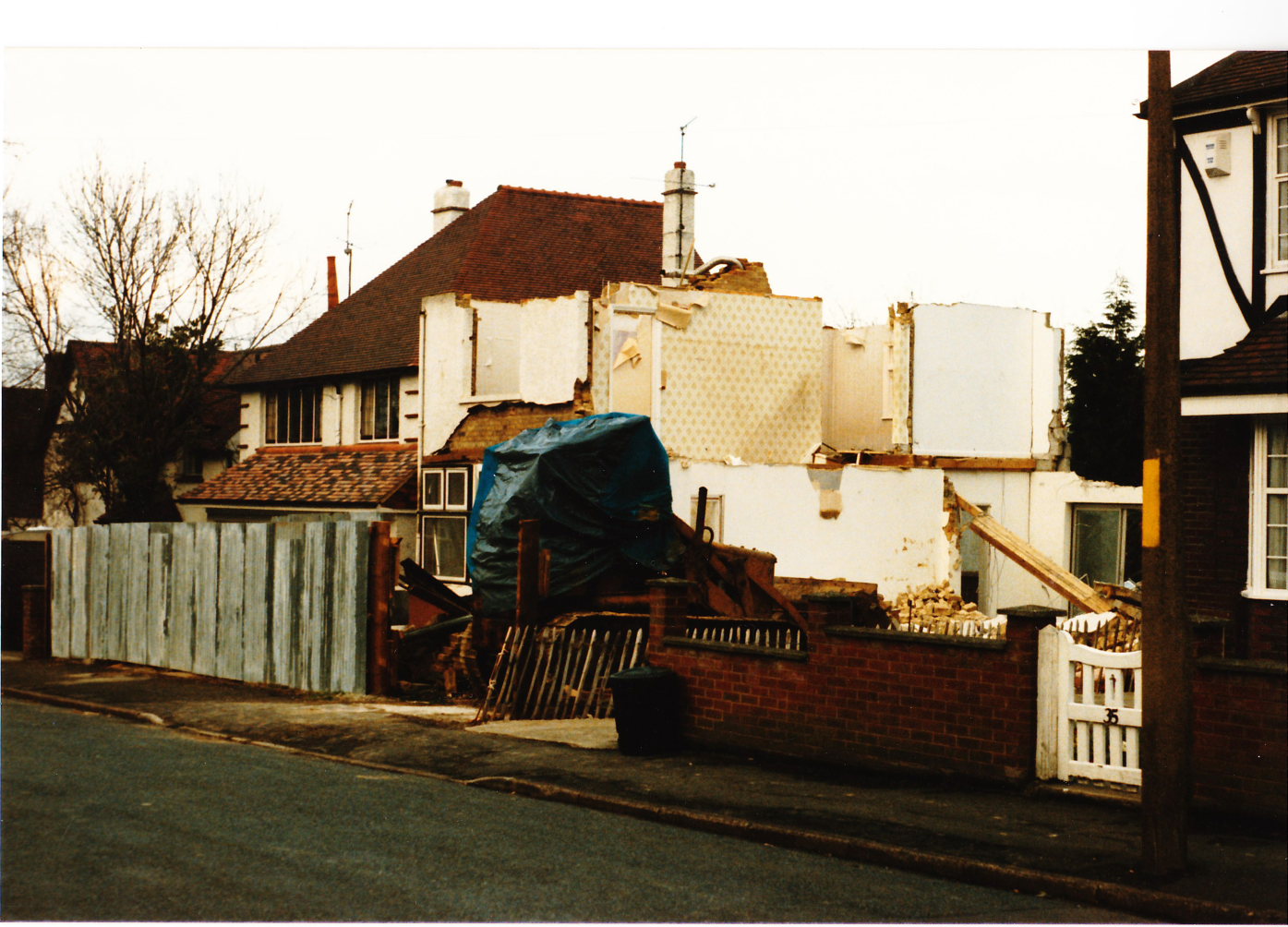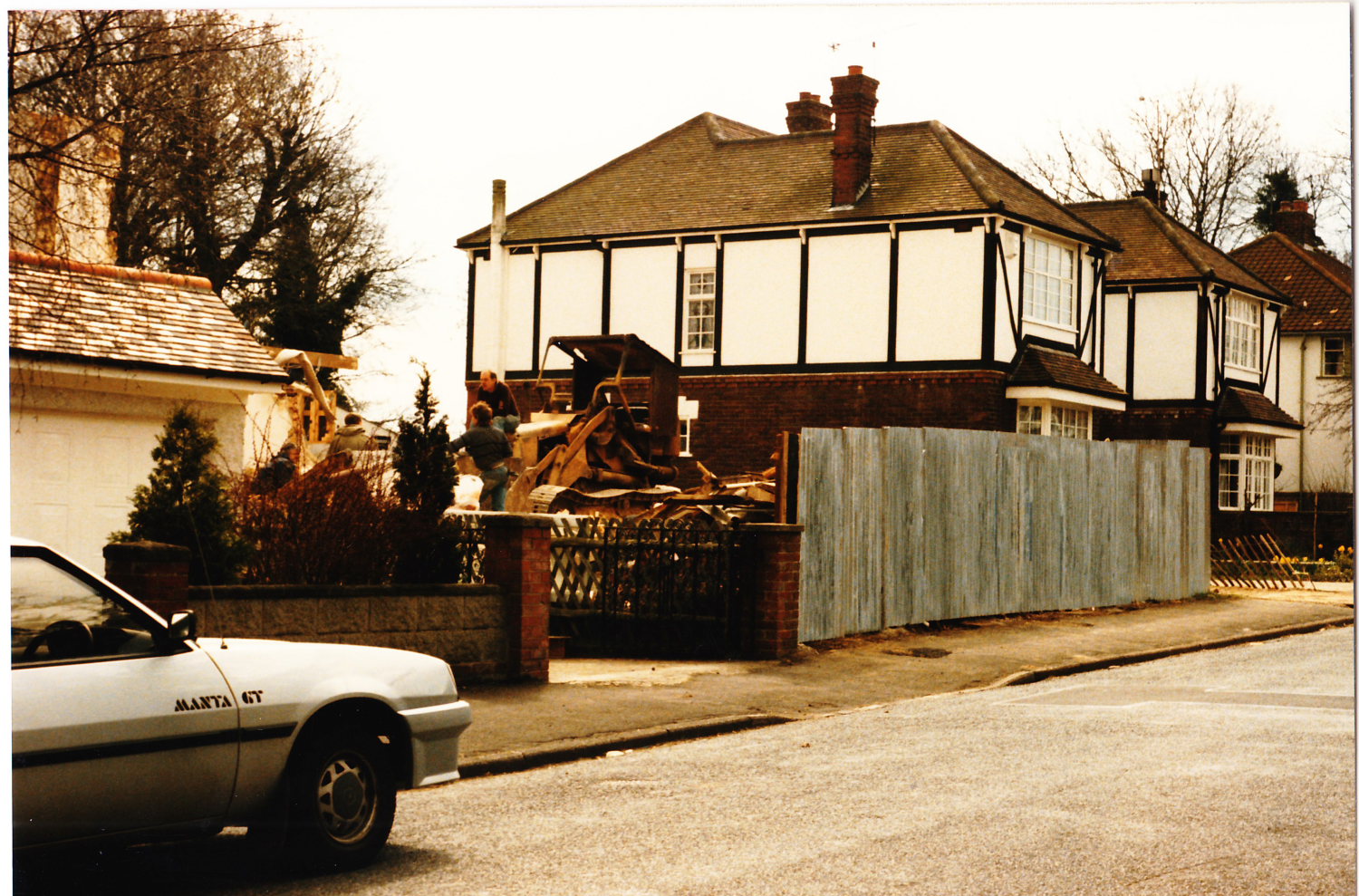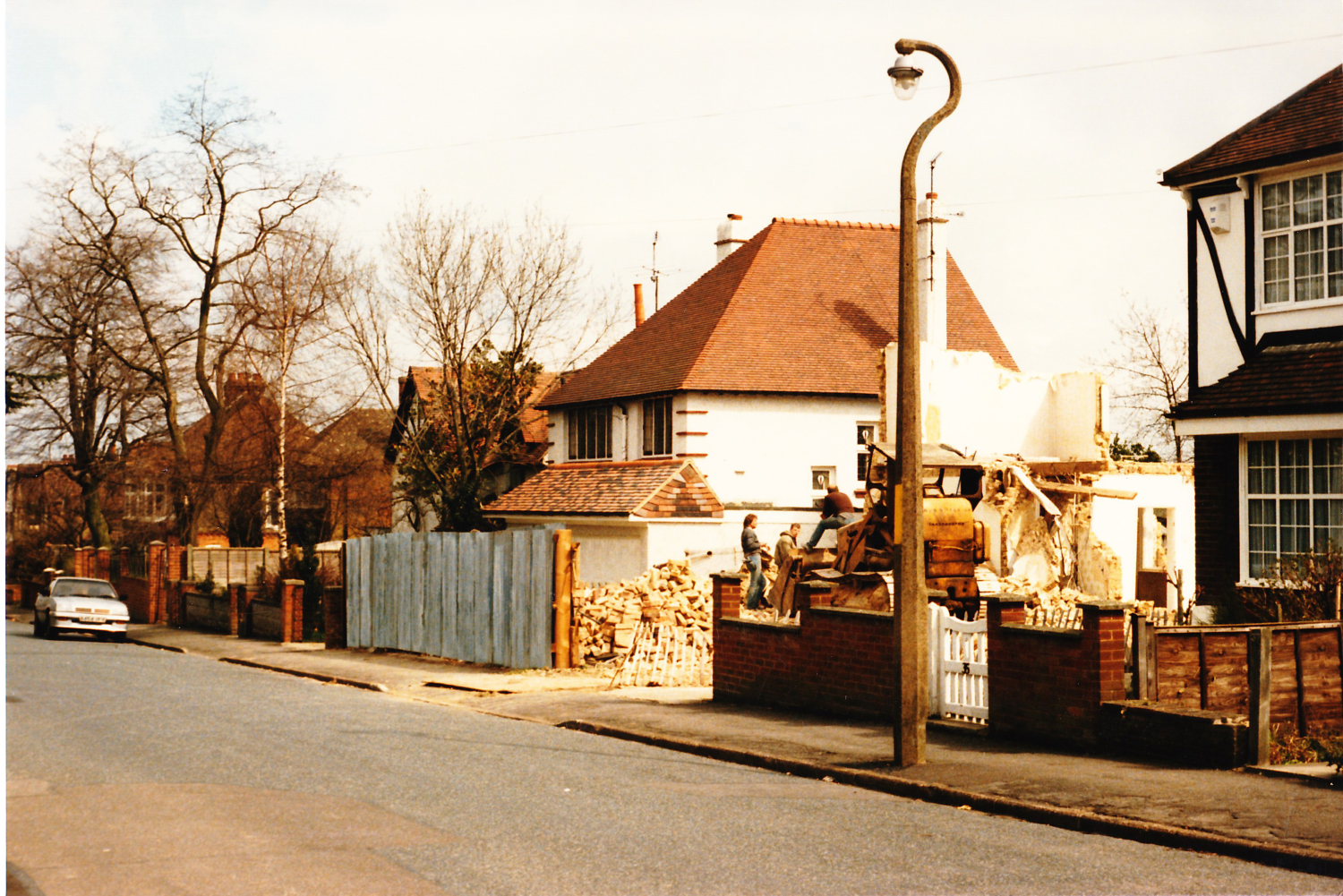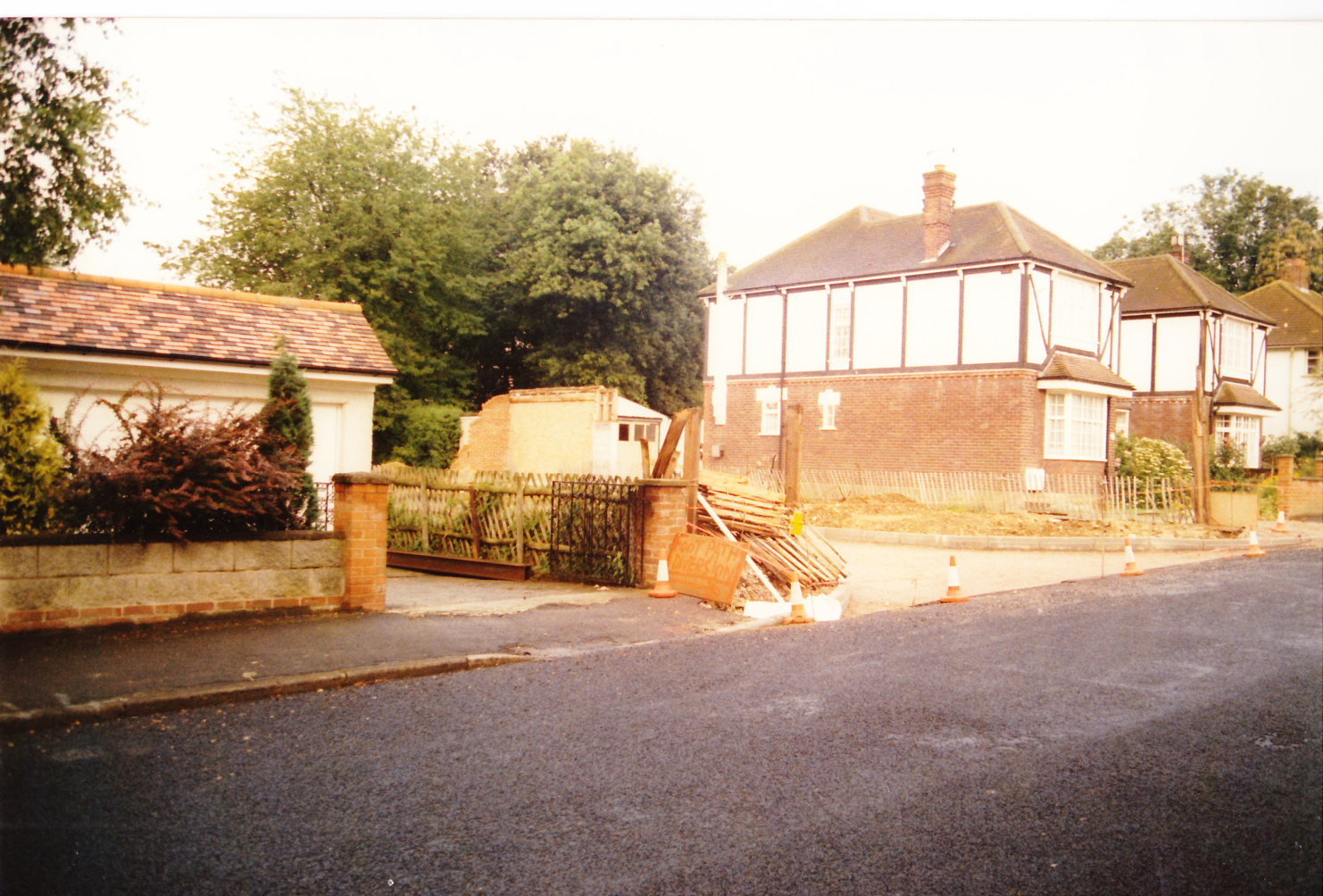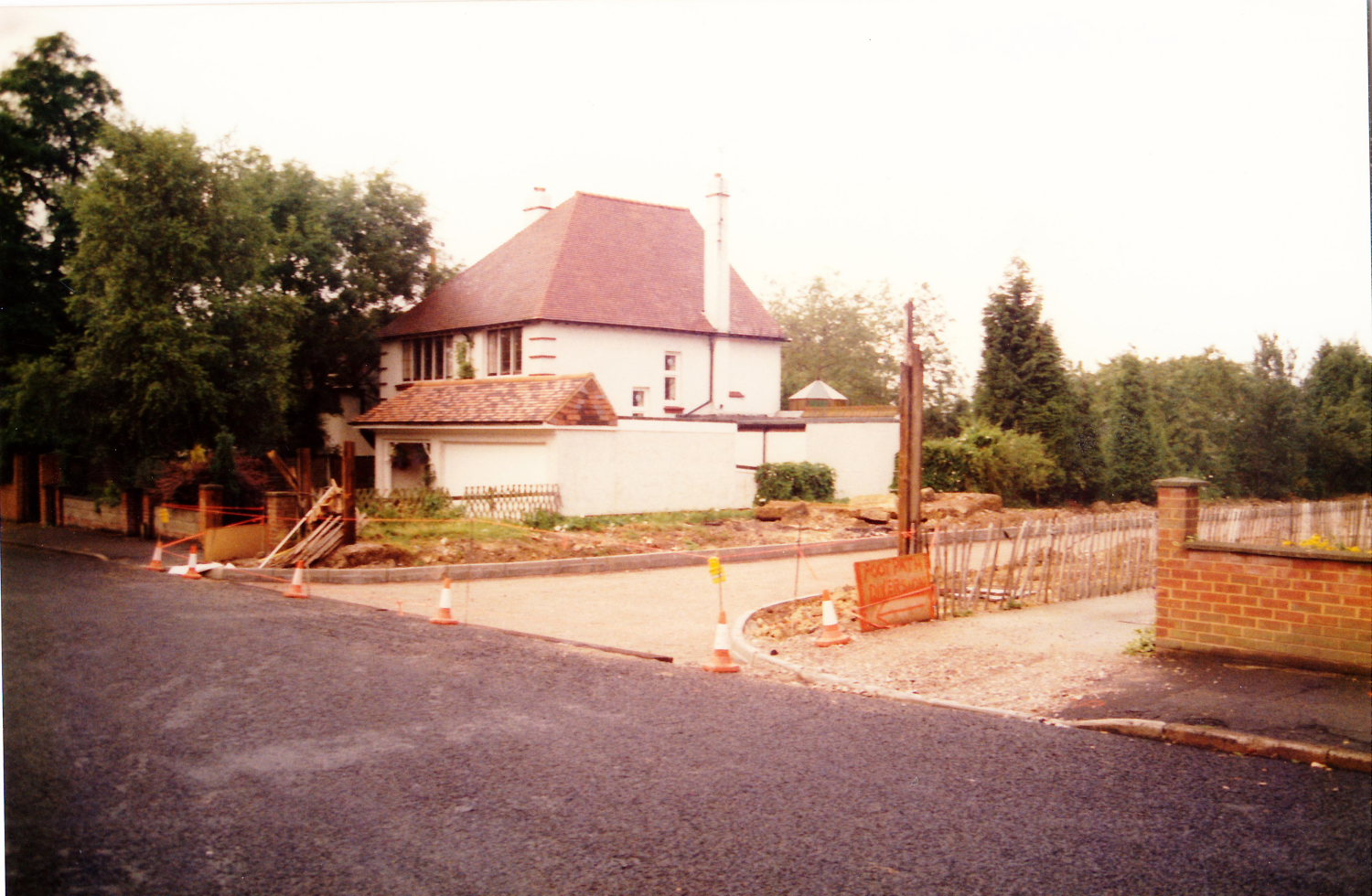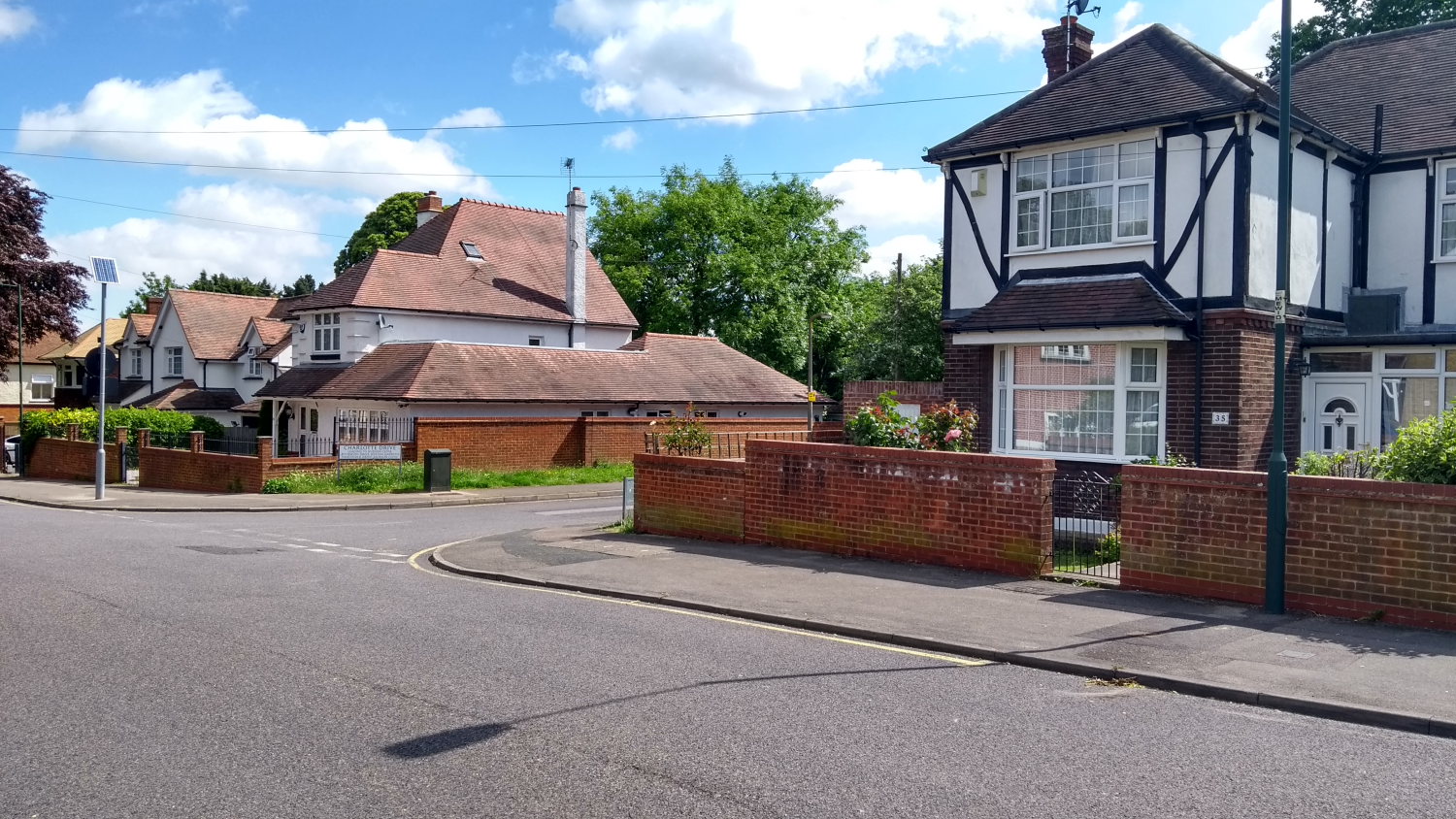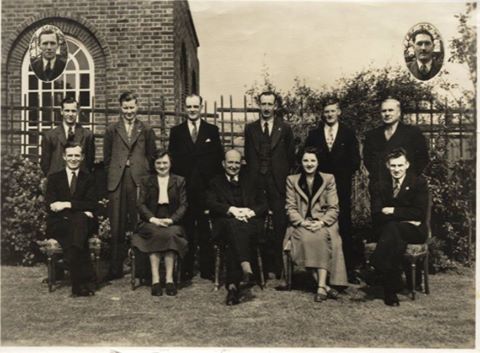
History Articles
History Articles

The Chatham Naval War Memorial located at the top of Great Lines in Gillingham commemorates 8500 sailors from Chatham who died in the First World War. The monument was extended after the Second World War to add an additional 10,000 names of those who had died in service during the conflict.
The Chatham War Memorial monument which contains the names of those who died in service during the First World War is surrounded by a wall which displays the names of the 10,000 who died during the Second World War.
The names of all those commemorated are shown on the Commonwealth War Graves Commission website which was where I found details of my great-grandfather's service records. Arthur Percy Light from Gillingham died when HMS Hogue was torpedoed in September 1914.
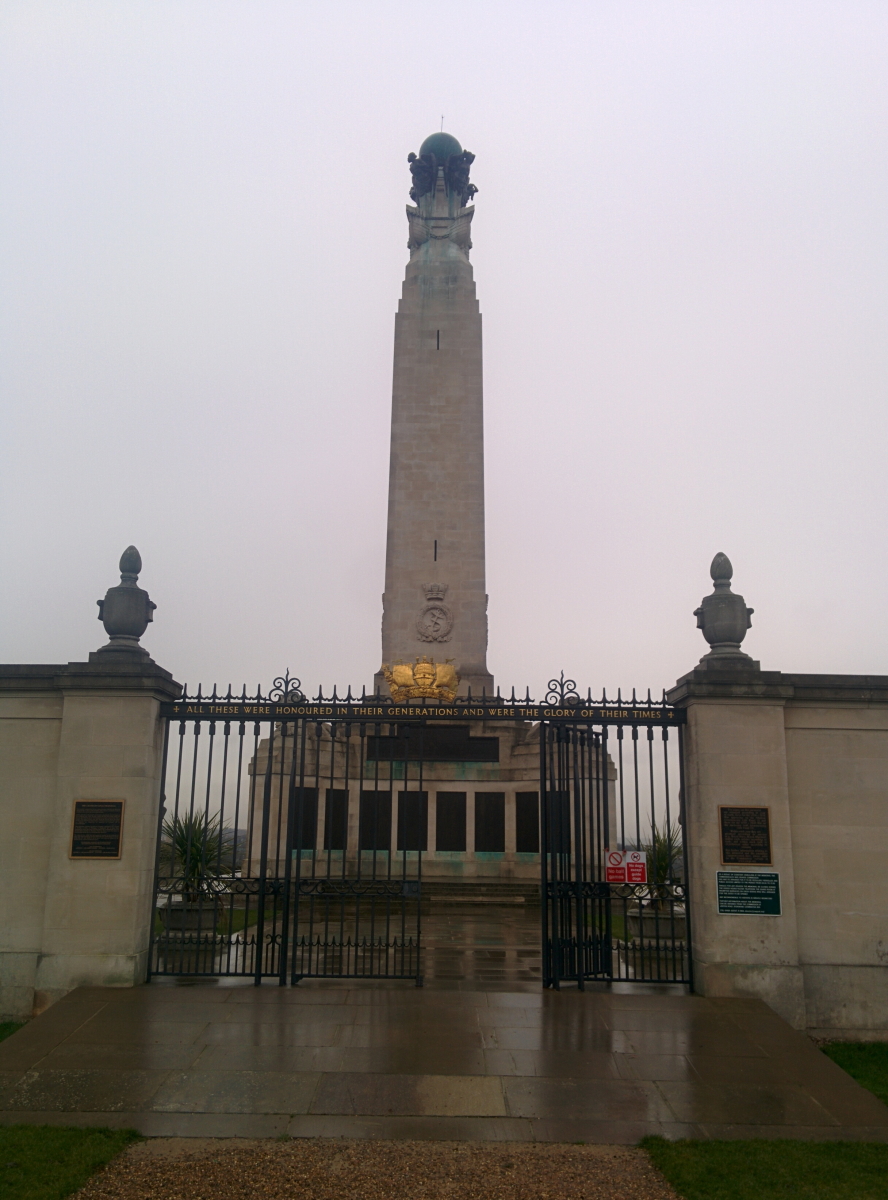
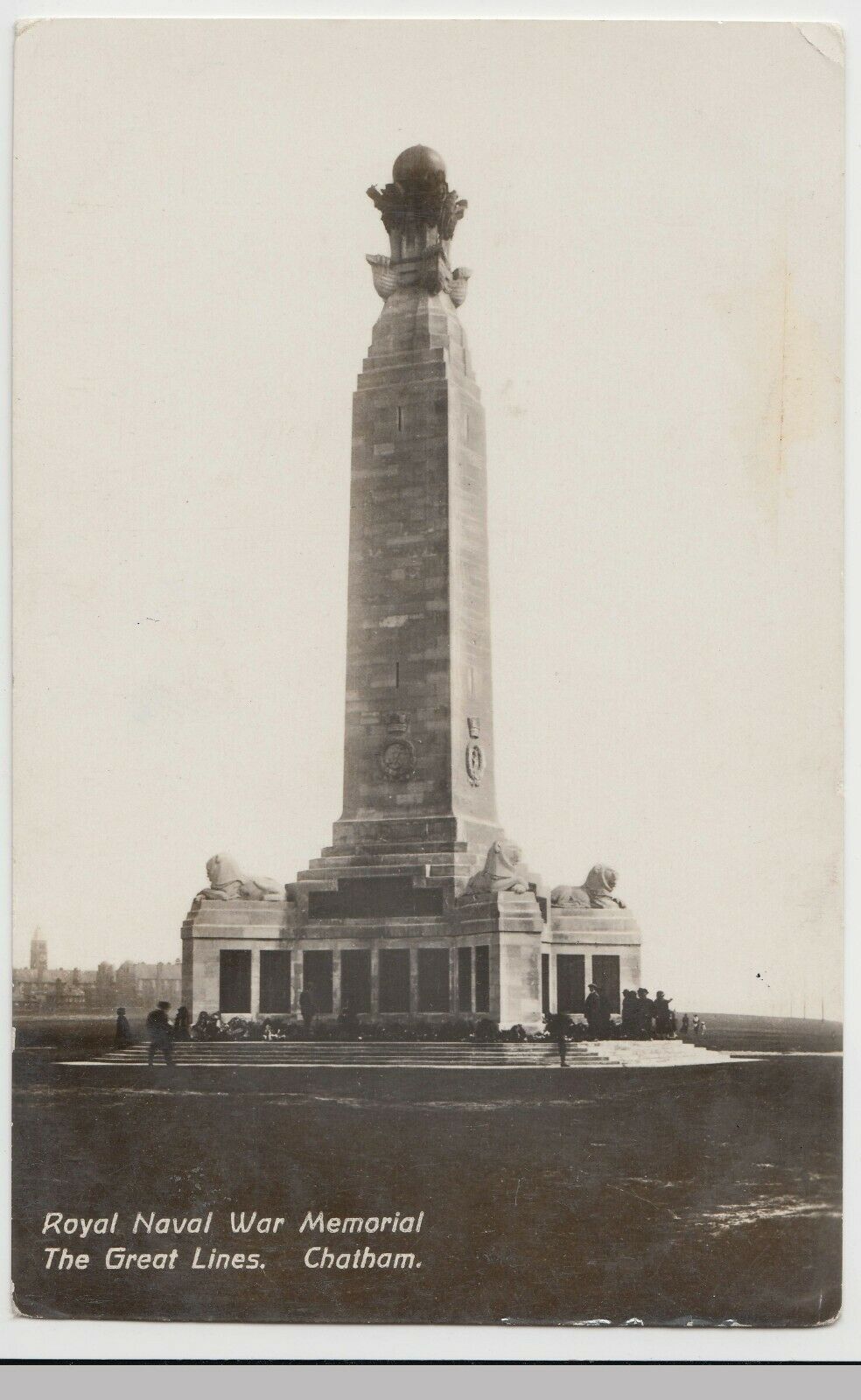
Many of the street names in Rainham have changed over the years. You can read here how Rainham Kent Street Names have changed over the years but one that still has a reminder of the original name is Webster Road which was originally Milton Road. At the end of the street is still Milton House with a brass plaque on the front gate.
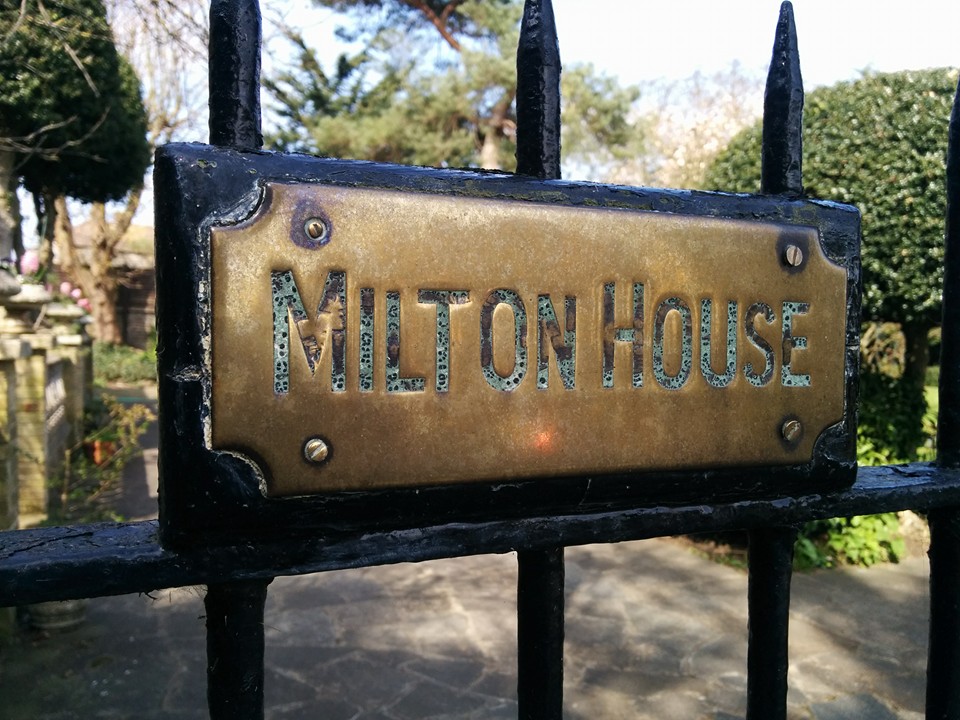
BLOORS PLACE - Lower Rainham
Bloors Place stands on the Lower Rainham Road, not far from the riverside and Bloors Wharf, which was known in earlier times as Blowers Quay. The quay, and Bloors Place, take their name from the family of le Bloere or le Blore. The house, one of the oldest in Medway, was originally built between 1470 and 1510. Once a simple Wealden hall house, a stone range was added to the rear in the early 16th century, perhaps at the same time as the very large central octagonal chimney was inserted. These improvements were probably made when Christopher Bloor lived there. According to Hasted, Christopher Bloor, who had bought the Manor of Sileham from Sir Antony St Leger, 'rebuilt his seat in this parish ... .in which his ancestors had resided for several generations'. The house was surrounded by walls with defensive apertures known as gun loops, and also special niches, bee boles, to hold the straw skeps where the bees were kept.
Like most old houses, Bloors Place has been frequently altered and extended. In 1710 the front was refurbished. The building was damaged by a fire in the eighteenth century and 'A great part of the old mansion was pulled down circa 1798 or earlier to adapt the size of it to that of a farmhouse, though what still remains of it, with the garden walls, offices, and so on show it to have been of large size, well suited to the hospitality of those times, and to the rank which the founder of it, Christopher Bloor, esq., held among the gentry of the county'. [Kent on line - Parish Clerk.]
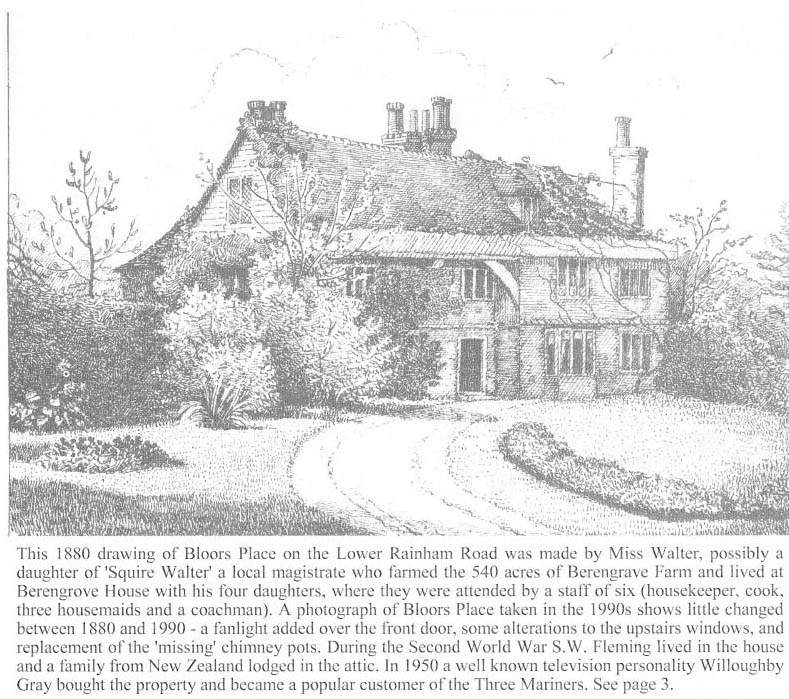
The house came indirectly into the ownership of the Tuftons, Earls of Thanet, through Bloor's daughter, Olympia. The Tufton surname is commemorated by monuments to two descendants in St Margaret's Church at Rainham: the chapel at the end of the north aisle (officially St John's Chapel) is often called 'The Tufton Chapel'. An 1851 survey of Sir Richard Tufton's Bloors Place estate describes the house, rooms and all the outbuildings in some detail. It then goes on to make comments on the fields (there were 447 acres of arable, pasture and orchard), and records that the tenant, William Smart, was highly respectable and from the appearance of his farm, stock, etc. a man of substantial property (Holley).
From 1891 a Scotsman named James Stewart had been running the farm, and in 1920 he bought the whole estate for £2S,000. It has changed hands several times since then - when last sold the price was nearly thirty times that sum. According to some recent sale particulars 'The property still boasts a wealth of character features including a heavily timbered interior with feature crown posts and 16th century moulded stone mullion windows to the rear, panelled drawing room and a first floor landing with detail enriched spandrels and moulded stops above the doorway'. The agent at an earlier sale also mentioned 'the delightful wall paintings of fairy tale scenes from the 1950s in one of the bedrooms. During the Second World War SW Fleming lived in the house and in 1950 a well known TV personality Willoughby Gray bought the property and became a popular customer of the Three Mariners pub.
Since then new owners have partly modernised the interior, putting in another staircase, reordering the kitchen and converting an outbuilding to a utility room for example, but any such alterations to a listed building have to be done following detailed planning consultation. Currently planning permission is being sought for exterior changes such as replacing a flat roof with a pitched roof more in keeping with the original house, and also adding a second dormer window at the front.
My family lived in Rainham from 1946 until about 1976. I was 8 when we arrived and remember the place vividly as it was until I drifted away at the age of 13, first to go to school in Rochester, then university, then overseas. My sister Mary was 1 when we moved in, and my other sister Susan was born during the severe winter of 1947 which got Rainham in its grip as everywhere else. We lived first in 93 Broadview Avenue near the Church Path, then 73 Orchard Street opposite the boys’ school. My family were not therefore ‘natives’ of Rainham. We came there because my father was in the Royal Marines and spent his last 5 years of service in Chatham. It is worth recalling that at this time the Medway area was dominated by the navy, the dockyard and the industries and firms which supported it. The place was full of sailors, marines and dockyard ‘mateys’, the arrival of some of whom in search of a more pleasant rural life-style accounted for Rainham’s growth in the pre- and post-war periods.
As other people have noted on this website, Rainham was then still essentially a village surrounded to the east and south by orchards, hop gardens, fields and woods. The beginnings of suburbanisation had begun on the Gillingham side with the development of two ‘new’ (actually pre-war) areas, one bounded by the A2, Hamilton Road, Nursery Road and Maidstone Road, the other – on the other side of Maidstone Road – made up of Tudor Grove, Broadview Avenue, Herbert Road and (the incomplete) Arthur Road. The war had stopped all this in its tracks, but it was, of course to start up again with a vengeance in the 1960s.
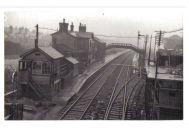
At the beginning our lives were focussed on the village. At first, I went to St Margaret’s C of E Primary School at the top of Station Road. This was a substantial two-storey building of brick and flint with a tree in the grounds and concrete steps outside leading to the upper floor where the senior pupils were taught by the headmaster. Mr Turner. Below, the infants and juniors were taught, first by the wonderful Miss List (who used to send someone out on Friday afternoons to buy the latest edition of Enid Blyton’s ‘Sunny Stories’ from which, to our delight, she then read stories about elves and fairies. As we progressed, we were entrusted to the more formidable but still likeable Miss ‘Fanny’ Evans. One thing I remember vividly was the daily arrival of crates of free, very cold milk in tiny bottled with fascinating metal tops, which we drank through straws. I went to the Sunday School too, and was taught by Mr Denis, an admirable and devout man, heavily tanned and with a broad accent who was said to be the captain of a Medway barge. He provided the music for the hymns with his squeeze box. I think he was the brother of the Mr Denis who ran the butcher’s shop just down Station Road. The vicar, Mr Jordan, turned up occasionally. I don’t remember him that well: but I remember vividly his tiny grey coloured, Austin seven car.
Thinking of the butcher raises another matter. The immediate post-war period was a time of real austerity. No-one had any money, we all looked shabby and everything was rationed. Every Saturday morning, I remember, Mr Denis’s butcher’s boy would arrive on his bike with a basket on the front containing the tiny roll of beef (called hilariously ‘the Sunday joint’) that we were allowed, and which had to last for ages. A result of this was that every back garden was devoted to growing vegetables or soft fruits, and had chicken runs or rabbit hutches to supplement the food supply. We had six Rhode Island Reds which gave us eggs and the occasional Xmas dinner. Chicken in those days was a rare luxury – not the cheap common-a-garden meat it is today. My memories of the local sweet shops (notably for me, Parker’s - just round from the bottom of Orchard Street) were coloured by this. They may have been full of delights, but in my day what we could buy was rationed and when, to our delight, sweet rationing was abolished (1950 odd) the demand was so great that they had to put it on again! There was no central heating either. Even when you could get enough coal or wood to keep the fire going, I regularly used to wake up of a winter’s morning with ice on the inside of my bedroom window! Rainham was also the site of my first real disappointment in life. During the war bananas had been impossible to get and the news that they were to be available again produced joy and enthusiasm. I remember standing in Orchard Street when a friend suddenly produced this strange looking yellow thing – so unattractive and different from the exotic and succulent delicacy of our imaginations. We didn’t know what to do with it. Eventually we realised we had to peel it: but even them we were unimpressed and couldn’t work out what all the fuss had been about.
As everyone will tell you, we had to make a lot of our own amusements. There was no TV (a few sets only appeared in the middle 1950s) but we made the most of the wireless, listening mostly to comedy programme’s like ‘ITMA’ and ‘Much Binding in the Marsh’ and Wilfred Pickles’ popular quiz show: ‘Give ‘em the Money Barney’ he would say as he dished out the equivalent of 10p to the lucky winner. Not like now. Working the radio wasn’t that easy. Our set was powered by rows of big square glass containers of chemicals called ‘accumulators’ which presumably produced electricity and were linked to the set by complex wiring. We weren’t submerged in 24 hour sport and entertainment like today and things such as the Boat Race, the Grand National, the Test Match, the Boat Race and the Cup Final were significant national events which we all looked forward to.. Apart from the Coronation, the only time I saw TV was to watch the Boat Race and the Blackpool-Bolton Wanderers Cup Final when Stanley Matthews finally won his cup winners’ medal. By contrast to Wayne Rooney, Matthews probably earned about £10 a week.
For us children, there was plenty to enjoy. We used to go down to the Chalk Pit in Berengrave Lane to find newts and come back with sticklebacks and tadpoles in jam jars. There were the wonderful Rainham Woods to play cowboys and Robin Hood in: they seemed huge and started just south of the fields near Arthur Road and filled the space between Wigmore and Jack Clark’s farm and hop gardens in Meirscourt Road. For entertainment, there was Saturday morning pictures for kids at the Royal Rainham – the famous Bughutch – where, when not charging about the aisles and yelling our heads off to the despair of the manager, we enjoyed a diet of westerns, cartoons and historical epics like ‘The Sea Wolf’ and ‘The Four Feathers’. In the summer and autumn there were the delights of scrumping for apples, cherries and plums. At that time there was nothing but orchards, fields, fruit trees and sheep east of the Church Path, which ran from the eastern end of the churchyard up past the end of Tudor Grove, Broadview Avenue and Herbert Road then across a scruffy bit of waste land with damson bushes to the Woods. Summer Sundays brought idyllic afternoons watching Rainham Cricket team in their spectacular tree-surrounded pitch in Berengrave Lane. Then, in the evenings we had the pleasure of lining the A2 opposite the Cricketer’s to jeer at the Londoners in cars and coaches who were crawling back through the village bumper to bumper after a day trip to Margate. Autumn brought the conker season (the best ones were obtained by throwing sticks into the horse chestnut trees in front of the church) and Guy Fawkes day. Always misty, we used to let off bangers, squibs, roman candles and rockets in our back garden then go to the huge ‘formal’ bonfire which had been built on nearby waste ground. Ours was in the space where Arthur Road ended. There were also the attractions of the 20th Medway (Rainham) Scout troop. I joined for the glamour of the uniform and the ten gallon hat which I wore in the style of cowboy idle, Roy Rogers. The scout hut was near the gate of the cricket ground. I don’t remember doing much but learnt how to do lots of useful things with rope and string.
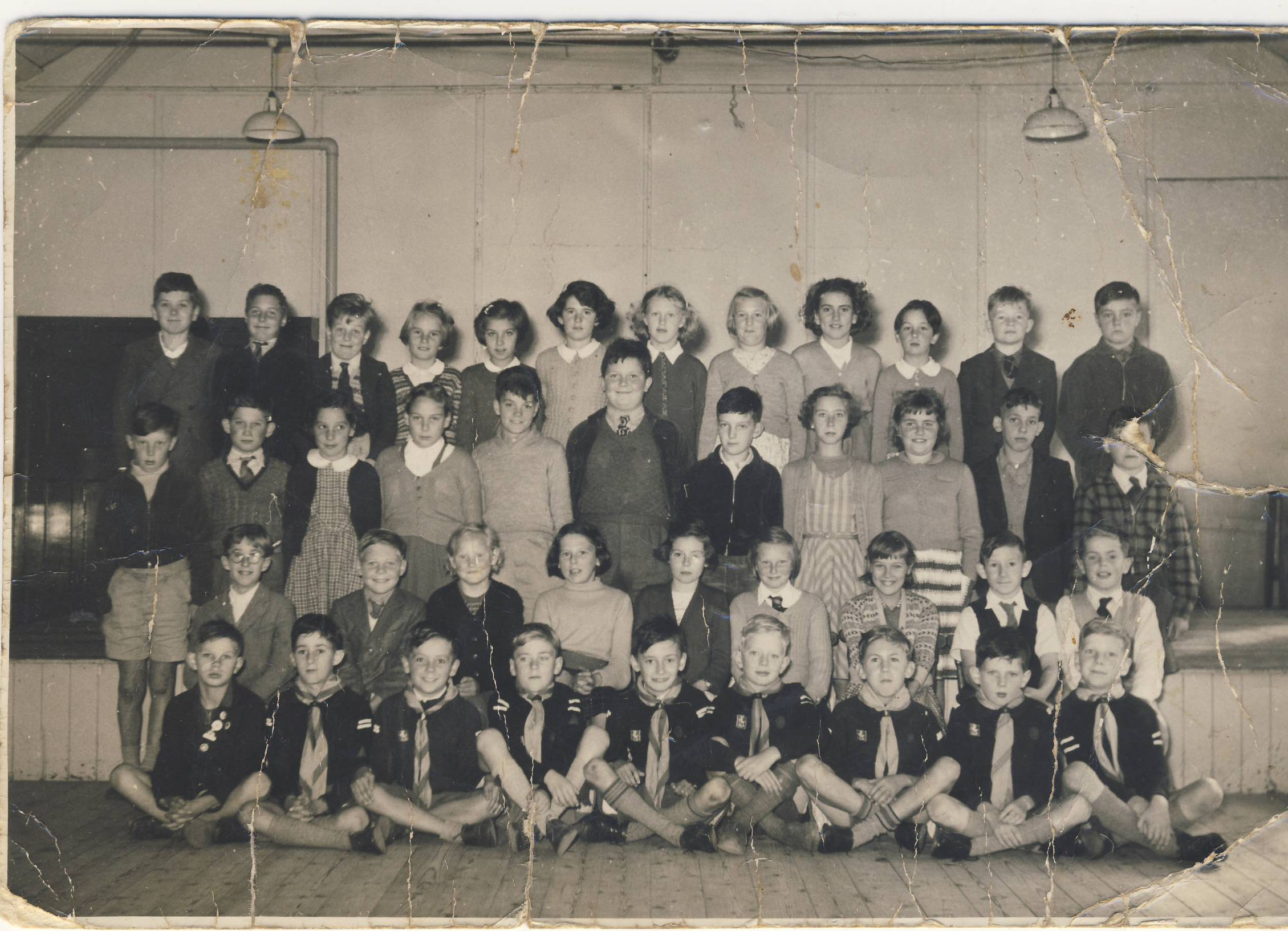
Class at Camp School 1953
A significant event occurred in 1947-8. The population of Rainham must have been growing, so the powers that be decided to open a new primary school in Maidstone Road (on a rise just opposite Highfield Road). I and, I imagine all the children who lived in the area south of the main road in the ‘pre-war’ developments, were moved from the C of E Primary School to the new one. It was called the ‘Camp School’ because it occupied the timber huts and facilities of an old army camp which was on the site. Its playground was a bit of rough pasture close to Rainham Woods. The first Headmaster was nice Mr Rivers who had been involved with military music in the war and had managed to get hold of a battered set of brass instruments – so we had a complete school band. We gave concerts – one of which I and my fellow cornetist, John Norris, messed up by playing ‘John Peel’ so fast that the others could not keep up. Another of Mr Rivers’ obsessions was Gilbert and Sullivan. One concert was devoted to excerpts from ‘HMS Pinafore’ with myself singing Sir Joseph Porter. Other memorable teachers were Mr Burroughs (smart in tie, green jacket, beige cavalry twill trousers and shiny brown boots), Mr Palmer, and Mr Smith – a sardonic type whose teaching technique had been learnt when he was a Physical Training Instructor in the navy and hadn't changed. He always referred to the ground as ‘the deck’ and called us ‘Boy!’
I enjoyed the Camp School but I don’t think it did much for the social cohesion of Rainham. At that time every British community seemed to be filled with petty snobberies and imaginary or real social gradations: most streets contained people who thought they were better and posher than those in the next. Early soaps (like Coronation Street and East Enders – before broadcasters developed the idea that neighbourliness was about crime and confrontation – were all based on these tensions.. Thus we who lived in the largely semi-detached prewar developments south of the Main Road tended to look down on the more working class inhabitants who lived in the terraces and housing estates between the Main Road and the railway; while looking up with awe at the middle class office workers who lived in the detached residences and bungalows up Maidstone Road and around Wigmore. Now Rainham had three primary schools catering separately for each group! The Camp School obviously benefitted from this more privileged clientele and there were some very bright little girls like Sheila Marriot and Laura Something who were mad on ‘Swallows and Amazons’ and insisted on being called ‘Susan; and ‘Titty’ after the heroines of that work. Not knowing - in those days of innocence - what these words actually meant, we obliged. We boys were more interested in ‘Ripping Yarns’ of British pluck against shifty foreigners written by people like Percy F Waterman.
There were also a number of squatters still living in the more remote bits of the old camp. These were people who had been bombed out in London or the Medway towns during the war and had moved into the first empty property they could find. At the Camp School gate lived one such family called Pickering who had a boy who was a fellow pupil. His grandfather lived with him and we were thrilled (having just seen ‘The Four Feathers’ at the Bughutch) to learn that this old man had actually been in the thin red line at the Battle of Omdurman outside Khartoum in 1898 when Kitchener had defeated the Sudanese and avenged General Gordon!
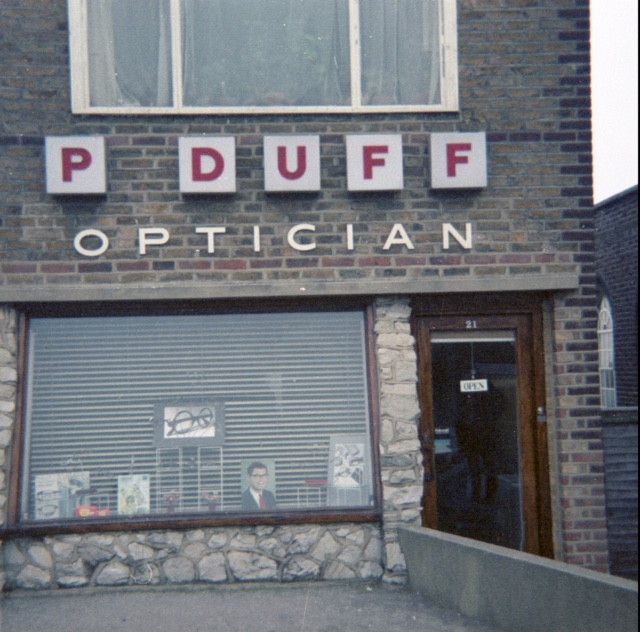
It was at the Camp School that they discovered I was short sighed. I have worn glasses ever since, and my first pair was supplied by Patrick Duff who had just opened a practice on the rise past the Post Office and Ivy Street. Mr Duff was youngish and pleasant with a grey suit and a little moustache. In fact he looked and dressed very much like the Reed brothers who ran the barber’s shop next to Cremer’s and Rainham Radio and opposite the Bughutch. The brothers wore suits and had little moustaches and hair gleaming with Bryllcreme. They bore a strong resemblance to Private Walker in Dad’s Army (though without the spivery.) Both had been captured outside Dunkirk and had spent the whole of the war in German prison camps. I remember that, between the snip-snips, they regaled us with stories of crossing Germany in cattle trucks and being told by confident guards what they intended to do to Mr Churchill when they successfully invaded Britain!
The different social circumstances of the three Rainham primary schools however were not reflected in the results. Strangely, hardly any boys from the area passed the 11 plus examination and we all found ourselves at the Secondary Modern School in Orchard Street. In those days, of course, the state education system was divided into three parts – the Grammar schools which took the academically gifted who were destined for ‘professional’ jobs at the age of 11; the Technical Schools (filled by another selection process at 13) which prepared for middle grade engineering and technical careers; and the Moderns which the rest attended, the majority destined for ordinary working class jobs.
I must admit that to have ‘failed’ the 11 plus examination was a source of some shame – especially when we met those who had passed wearing their smart Grammar School uniforms. Theoretically therefore, the Orchard Street Secondary Modern should have been ‘bog standard’ and bottom of the educational heap. But I can say most emphatically that it was not. Obviously it taught non-academic subjects like woodwork, metalwork, mechanical drawing, book binding, pottery and gardening – indeed I have been grateful for the grounding it gave me in these practical skills ever since – but academically (in the A streams at any rate) what was taught and the way it was taught was little different to what took place in (for example) the Mathematical School in Rochester. (I know this because I was transferred to it at the age of 13) The only real difference was that at Rainham we did not do languages. Likewise the whole tone of the school was disciplined and purposeful. The Headmaster, Mr RAF Bacon MSc, ran it like any ‘normal’ secondary school, was treated with enormous respect by all, and set the tone by walking the corridors dressed in his academic gown. He was strict and there was always the cane in reserve for delinquents. Not that there were many of those: I have little recollection of bullying or rowdiness.
Mr Bacon was supported by a team of teachers, many of whom had just left the forces or had recently graduated. Mr Brown, the Games Master, had been in the navy in the Med and had a large metal tag on his key ring stamped ‘Commander’s Cabin’; the two teachers of metalwork (I forget their names) had both been RN Engine Room Artificers; Mr Castell had been in the RAF; Mr Springall had been in the Royal Marine Band. The last taught music and ran the school choir. He was a keen Salvationist and was Bandmaster to the Salvation Army Citadel in Gillingham. I remember him taking the choir there where we sang ‘All in the April Evening.’ Other memorable teachers were Ernie Rotherham, a short north countryman who taught pottery and book binding; the perpetually relaxed Bert Newall who did art; and Mr Patterson who taught us gardening. He was very devout and ran a bible reading group which I joined (shamefully in order to be able to wear the little green enamel badge with a silver lamp on it which all members were given). He later left to become a missionary in Uganda. On the more academic side, here was Percy Johns, red faced and tweedy, who introduced us to history; while English was the preserve of two University of Wales graduates and brothers, Rhys Williams and Haydn Williams, both of whom were tall and thin and rode huge ‘sit up and beg’ bicycles. There were class trips too – all by bicycle. One was to Sharp’s Toffee Factory in Maidstone (the sweet smell put us off confectionary for weeks) and another all the way to Canterbury. I returned with two old cavalry sabres which I had bought for the equivalent of 25p each tied to my crossbar.
When I went to school in Rochester I gradually lost touch with Rainham. I got home late and had to leave home early to catch the bus (either the green Maidstone and District number 26 - Faversham to Gravesend - which went past my new school but trailed all round Gillingham; or the Brown Chatham Traction Co. number 2 which went down Chatham Hill but only went as far as the Town Hall). And at the weekend I was obsessed with homework. In the holidays however I was still around and, like many people in Rainham and district spent the summer working on local farms (in my case Jack Clarks’). There were cherries, apples and plums to be picked and hops to be gathered. Local families went together to the many hop gardens in the area and had a three week paid holiday in the fresh air picking them. This involved working their way slowly along rows of hop plants, standing as they pulled the bines down from the wires on which they grew, then sitting to pull off the hops and heap them in huge bins made of sacking. The quantity picked (and the amount earned) was checked, and the bins emptied regularly. My father and I worked as ‘Pole Pullers’, in charge of a dozen rows of hops (and the families who were picking them) and equipped with a twelve foot pole with a knife at the end. Our job was to make sure the pickers did not hide the smaller hops (payment was by volume) and to cut down any bines which got stuck at the top of the wire. Some of the women in the hop garden were a pretty rough lot and, as a young male teenager I came in for a lot of banter and lewd innuendo replete with suggestions about what I could do with my pole which had nothing to do with hops. Hops were waxy with a distinct smell which could not be easily removed. For weeks we just stank!
Brian Vale
This article about house price rises was written in December 1989 shortly before the market started a long crash! The prediction from Woolwich Building society was that house prices would rise by 11.9% a year over the next decade reaching an average of £200,000 in 2000. The reality was somewhat different! It might seem like prices have been rising forever but the 1990s were quite stagnant for house prices and only started rising towards the end of the decade. Of most interest locally is that prices in Maidstone were predicted to rise by the most in the country to an average of £400,000 by the year 2000. The average still hasn't reached that 17 years later!

By any standard the winter of 1962-3 was one of the hardest Great Britain has ever had. It has been reckoned that in the Midlands, which didn't have the worst of it, there has been nothing comparable since 1740.
Click to view the whole booklet as PDF about the Long Winter of 1962-63 (a Guardian pamphlet) which was published about the winter of 1962-63 and the impact across the UK.
Even the most conservative estimates for the country as a whole conclude that it was the coldest since 1829-30. It was a winter in which cars were driven across the Thames, pack ice formed a quarter of a mile outside Whltstable Harbour, a family was marooned on a Dartmoor farm for 66 days. It killed at least 49 people. And though its economic effects were not as severe as those of 1946·7, public transport was several times brought to a standstill, and the January power crisis was grave enough to provoke an emergency meeting of the Cabinet. It was a winter to remember. What follows-the day-by-day summary of the chilliest news, the special articles by Guardian reporters and correspondents which appeared in the paper at the time, the illustrations and the statistics is a memorial to the long winter 1962-3.
Photo of cover of The Long Winter 1962-63 Guardian pamphlet
The National School (later C of E) at the top of Station Road had been built in 1846. In 1887 the National School continued to function at the top end of Station Road for 180 boys and 160 girls. Samuel Hodson had served as headmaster since 1883 and Miss Emily Charlesworth assisted him while the infant’s school continued to be run by Mrs Brice. The Lower Rainham National School which had been erected in 1876 had about 60 pupils and was run by Miss Knight then by Mrs Seago. A small private school run by Miss Bertha Atkins also existed just off Rainham High Street near the church path.
The National School was enlarged in 1878 and 1884, to hold 600 (205 Boys, 190 Girls and 205 Infants) and in 1908 there were 549 scholars attending.
Some of my contemporaries will be interested to know that even in 1908 our Head teacher, Mr G.R. Bone, and the two Miss Campbells were already on the staff and the Girls' teachers included Miss Rickells. Nearly all female staff were unmarried and 1 believe that it was an act of 1941 which allowed married women to be appointed.

This photo of the National School on the left of Station Road was taken in the early 1970s shortly before demolition and shows the building with the two extensions added in 1878 and 1884. The site is now the location of Wilkinson's shop and Barclays Bank.
The Temperance Hotel was located at 113 Station Road in Rainham opposite the train station. It became the Railway hotel and then Railway pub that closed in 2012 and as of 2017 is subject to a planning application to become a Wetherspoons pub.
The Parish Free Library and Reading Room became established at the end of the 19th century and could be found on the ground floor of the Temperance Hotel in Station Road. With a wide choice of reading material, over 2,000 books, daily newspapers and journals were available to read. A reference library could also be found. The lending library was only open from 7 pm to 9 pm. Mr Barrell from Milton Road (now Webster Road) served as the librarian in 1908.
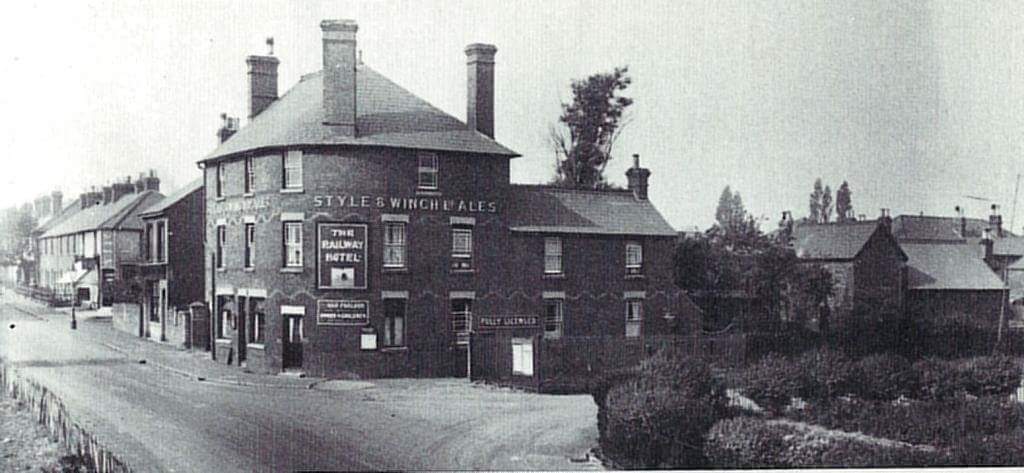
The construction of Rainham Social Club took place at the rear of the Temperance Hotel around 1904. Although much smaller than the present club in Station Road, it had a full sized billiard table and a membership of about seventy. Mr Child served as the steward and the club stayed open from 10 am to 10-30 pm.
The Temperance Hotel became the Railway Pub which subsequently closed around 2012. It was reopening in 2019 as a JD Wetherspoon pub after major refurbishment and extension. The Railway photo below was taken in 1981
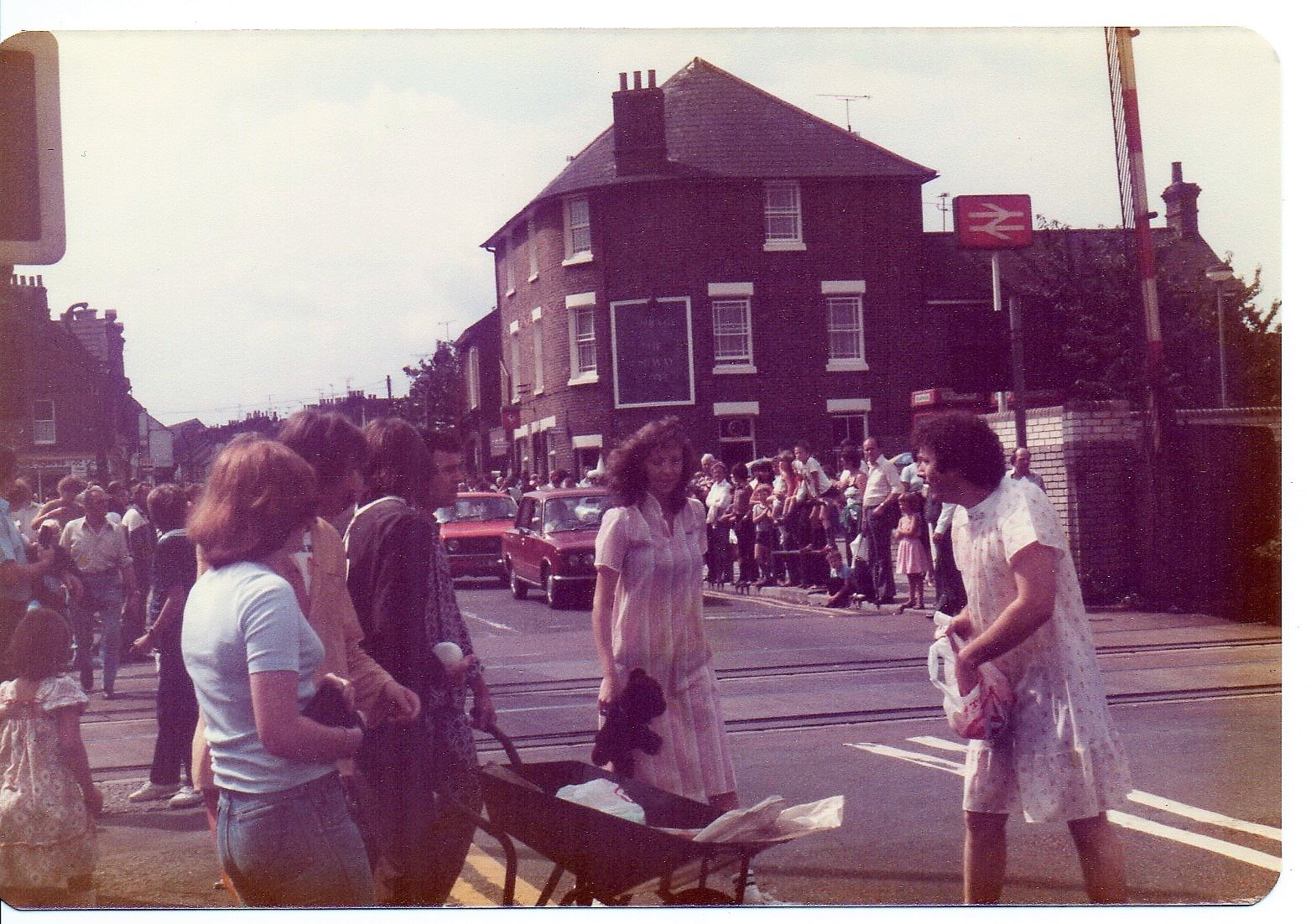
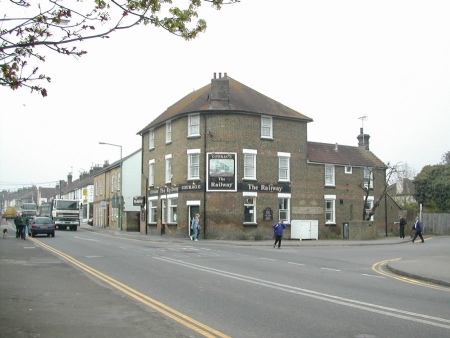
The information below is found on http://pubshistory.com/KentPubs/Rainham/RailwayHotel.shtml
1901/Stephen Mitchell/Inn Keeper/43/Kingsdown, Kent/Census ****
1901/Kate Mitchell/Wife/41/Wateringbury, Kent/Census
1901/Archibald Mitchell/Son/9/Maidstone, Kent/Census
1901/Albert Mitchell/Son/4/Maidstone, Kent/Census
1901/Dorothy Mitchell/Daughter/3/Rainham, Kent/Census
1901/Rosa Mitchell/Daughter/7 months/Rainham, Kent/Census
1901/Sarah Nye/Sister, Widow/51/East Malling, Kent/Census
1901/Alice Oben/Sister/43/East Malling, Kent/Census
1903/Stephen Mitchell/../../../Kellys Directory ***
1912-13/James Castle/../../../Kellys Directory ***
1913/James Castle/../../../Post Office Directory ****
1918/Mrs A Castle/../../../Post Office Directory ****
Charles Young Brown had the Railway Hotel, Rainham / Gillingham in 1919 for 14 years. I don't know if that is from 1919. *
1922/Charles Y Brown/../../../Post Office Directory ****
1930/Charles Y Brown/../../../Post Office Directory ****
1938/Hy A W Brown/../../../Post Office Directory ****
The White Horse pub is central to Rainham located on the A2 junction with Station Road and was sometimes known locally as the Wonky Donkey. Sadly it seems to be going downhill having closed last year, reopened again for almost a year and now is closed and boarded up (June 2017)
In previous years it was much more vibrant with many happy memories over the years.

1910 approx
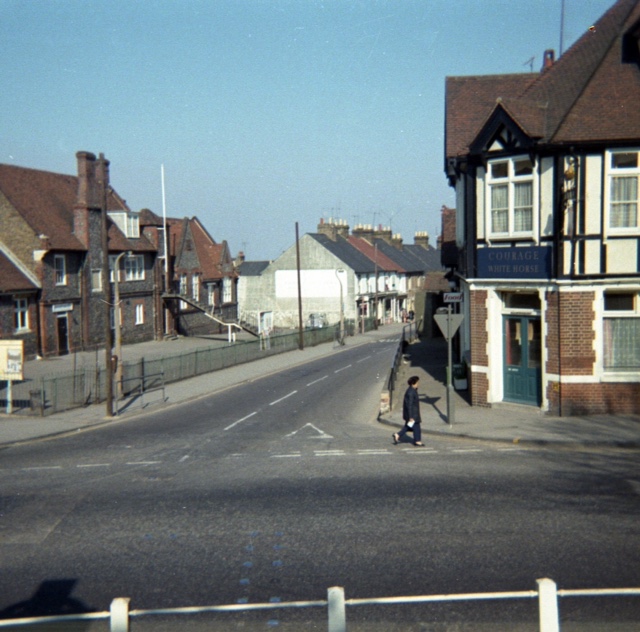
1972
2001


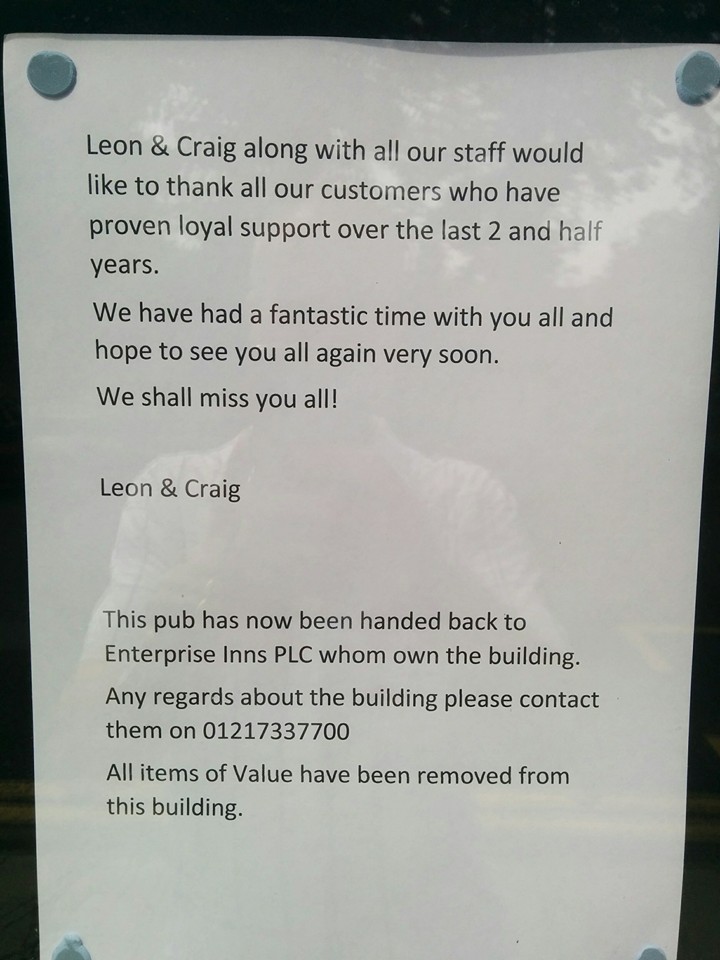
Rainham Station was developed when the railway line was built in the mid 1800s and the first station was built around 1850. It has been redeveloped several times since then, most recently in the early 1990s.
Rainham Station around 1972
Rainham Station around 1972 - area in the distance to the right is undeveloped at this time
Rainham Station around 1972
Above: Rainham station a few years earlier, around 1950
Below: Rainham station in the late 1800s, probably around 1890
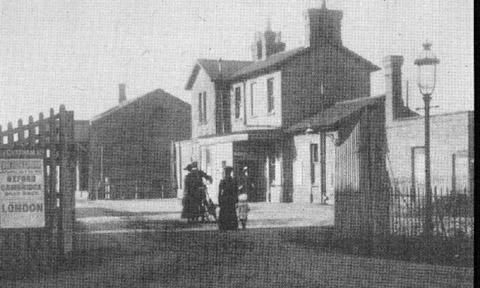
Below: Rainham station 1987 during the snow
Charlotte Drive off Marshall Road Rainham Kent was built starting in the late 1980s. The road was constructed by the demolition of 33 Marshall Road in 1987 as shown in the below photos. The house was demolished to create the access initially for Charlotte Drive but Hudson Close, Jefferson Drive, Vancouver Drive and Jackson Close were added afterwards.
These photos were taken over a period of weeks as the house roof was removed and the site cleared so the new road could be constructed.
This photo also features a rather nice Ford Sierra XR4i registration A132NHJ which is no longer on the road!
Charlotte Drive as it is in 2017. The house next to Charlotte Drive has been substantially extended since 1987. The photo taken on a mobile phone is much clearer than an SLR photo from 1987!
- Rainham Mark Grammar School RMGS Hovercraft 1987
- Independent Rainham Photography Exhibition
- Platform Row Cottages Rainham (Wakeley Oast house/Station Road)
- Rainham Spectacular Fair at Cozenton Park 1972 - 1991
- Rainham Spectacular Programme 1975
- Rainham Pram Race 1981
- Rainham Spectacular Programme 1977 - Glimpse into History!
- Rainham Community Centre Poster 1972
- Rainham Christmas Lights in the 1970s
- Tesco Extra Bowaters Rainham - When did Tesco Gillingham Open?
Subcategories
Historical tales Article Count: 3
Historical tales
Rainham Life Article Count: 10
Rainham Life
Local Events Article Count: 48
Local Events
Photos Article Count: 143
Photos
Rainham Roads Article Count: 25
Roads around the Rainham - old photos of how roads used to look in days gone by
Rainham People Article Count: 32
Decades - Old Photos Article Count: 9
Old photos by decade
Action Forum Article Count: 231
Action Forum is a free monthly magazine that is distributed to the Rainham area covering Wigmore, Parkwood and Hempstead as well. This archive covers old copies of the magazine dating back to its initial publication in 1969 and give a fascinating glimpse into life in Rainham over the last 50 years.
Link to Article Index - Action Forum Index - Photos and Articles from 1969 onwards
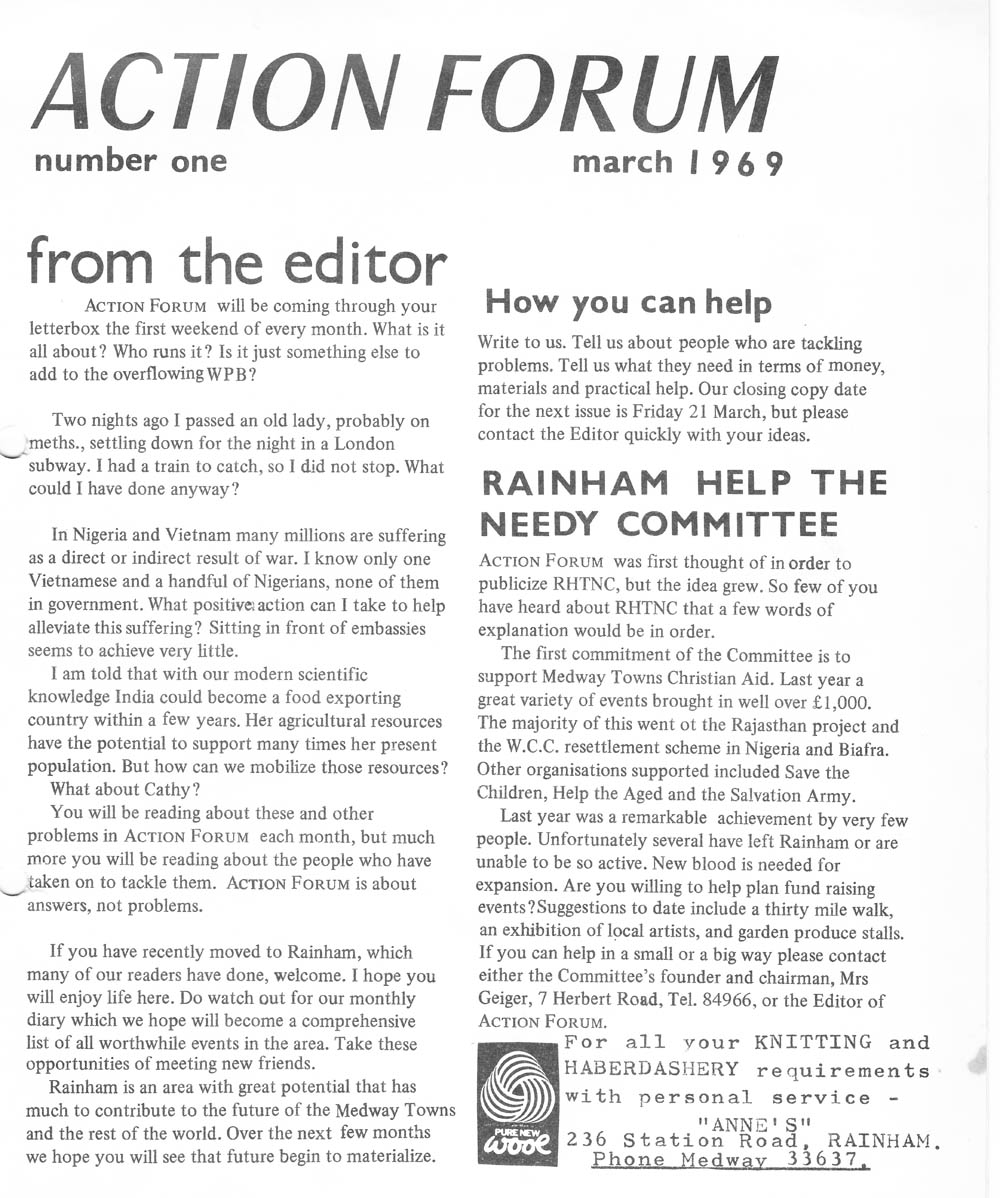

Action Forum 2024 Article Count: 3
Action Forum 2024 magazines
Action Forum 2023 Article Count: 11
Action Forum 2023
Action Forum 2022 Article Count: 11
Action Forum 2022
Action Forum 2021 Article Count: 9
Action Forum 2021
Action Forum 2020 Article Count: 5
Action Forum 2020
Action Forum 2019 Article Count: 11
Action Forum 2019
Action Forum 2018 Article Count: 11
Action Forum magazines from 2018
Action Forum 2017 Article Count: 11
Action Forum 2017
Action Forum 2016 Article Count: 11
Action Forum 2015 Article Count: 11
Action Forum from 2015
Action Forum 2014 Article Count: 11
Action Forum magazines from 2014
Action Forum 2013 Article Count: 11
Action Forum 2013
Action Forum 2012 Article Count: 11
Action Forum 2012
Action Forum 2011 Article Count: 11
Action Forum magazines from 2011
Action Forum 2010 Article Count: 9
Action Forum magazines from 2010
Action Forum 2009 Article Count: 11
Action Forum magazines from 2009
Action Forum 2008 Article Count: 2
Action Forum magazines from 2008
Action Forum 2007 Article Count: 2
Action Forum magazines from 2007
Action Forum 2006 Article Count: 2
Action Forum magazines from 2006
Action Forum 2005 Article Count: 3
Action Forum magazines from 2005
Action Forum 2004 Article Count: 2
Action Forum magazines from 2004
Action Forum 2003 Article Count: 9
Action Forum magazines from 2003
Action Forum 2002 Article Count: 11
Action Forum 2002
Action Forum 2001 Article Count: 8
Action Forum 2001
Action Forum 2000 Article Count: 1
Action Forum - 2000
Action Forum 1999 Article Count: 11
Action Forum 1999
Action Forum 1995 Article Count: 1
Action Forum 1991 Article Count: 2
Copies of Action Forum from 1991
Action Forum 1981 Article Count: 1
Action Forum 1981
Action Forum 1975 Article Count: 11
Action Forum 1975
Action Forum 1973 Article Count: 1
Action Forum 1973
Action Forum 1971 Article Count: 2
Action Forum 1971
Action Forum 1969 Article Count: 2
The first year of publication
Link to Article Index - Action Forum Index - Photos and Articles from 1969 onwards
Action Forum Text Index Article Count: 2
Text from Action Forum for Google indexing
Link to Article Index - Action Forum Index - Photos and Articles from 1969 onwards


















































































































































